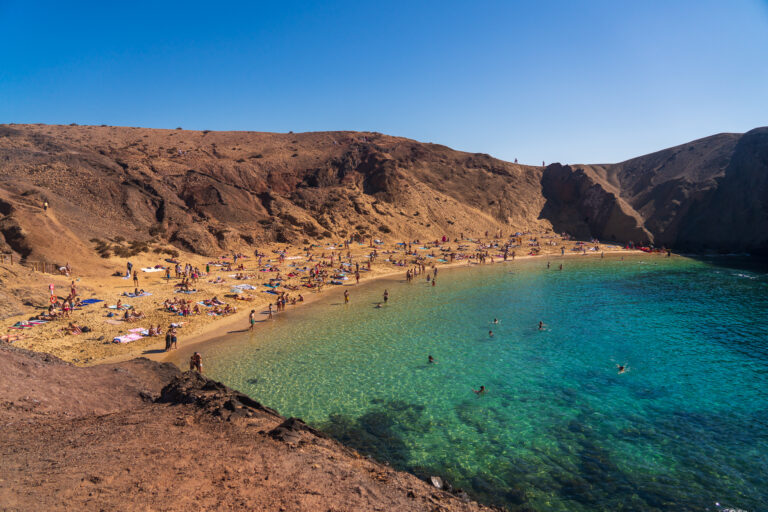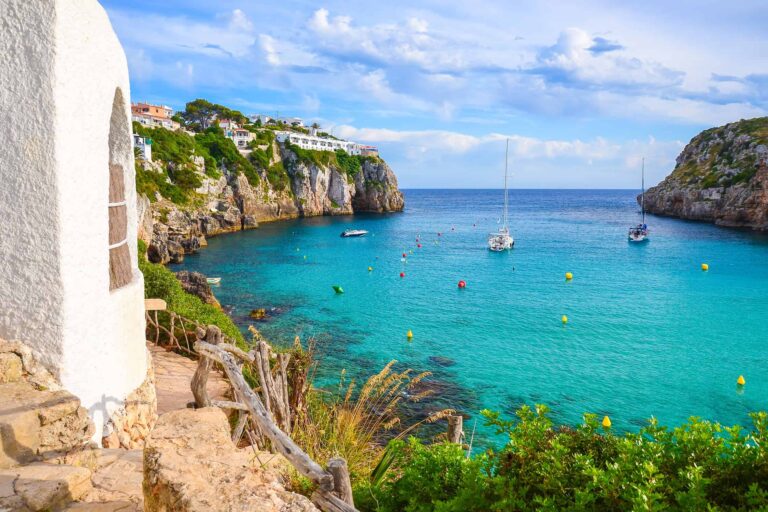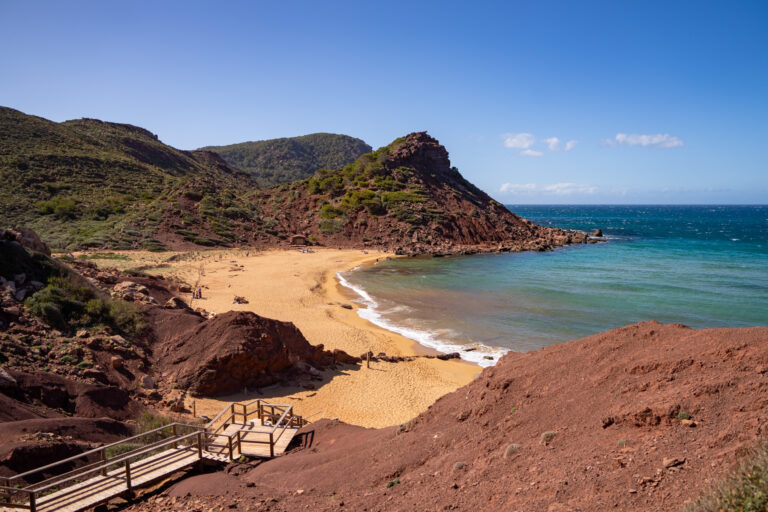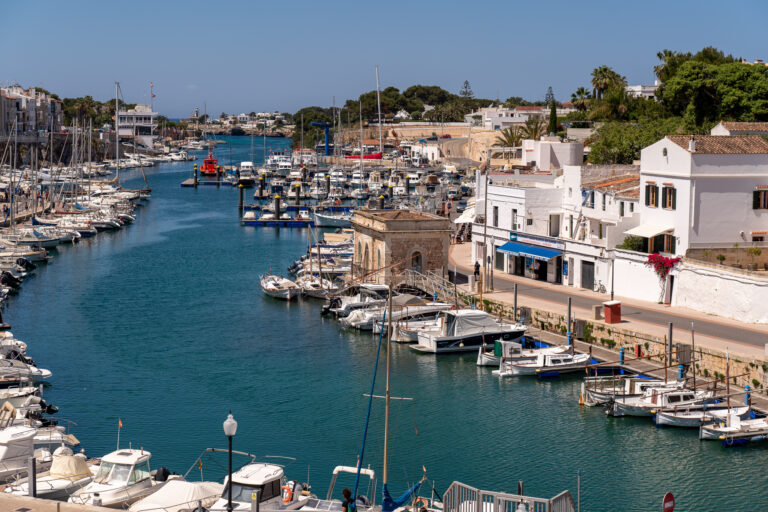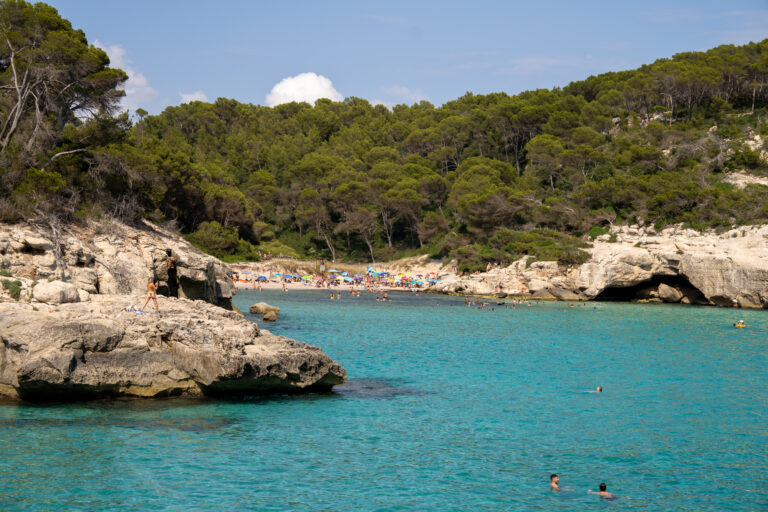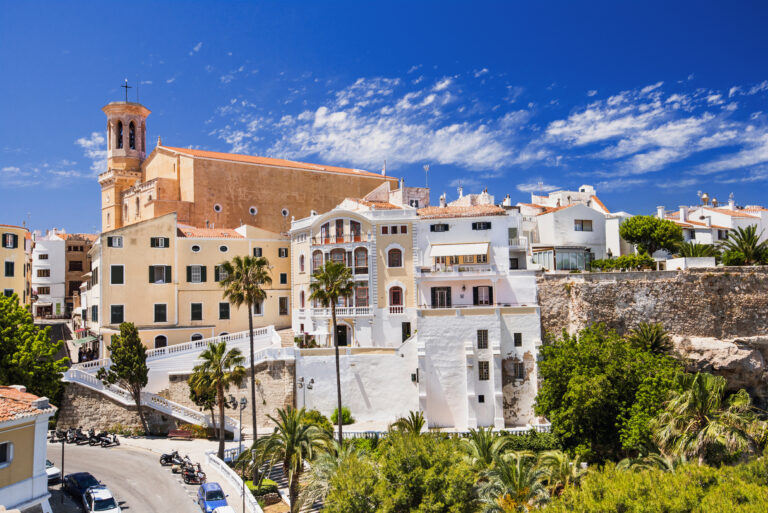Best Things to do in Mallorca, Spain (Ultimate Insider’s Guide)
The largest of Spain’s Balearic Islands, Mallorca is an idyllic place to visit all year round. One that has been popular with artists, composers, writers, and celebrities for decades.
Despite its more recent reputation as a resort island, if you step off the main tourist trail you’ll discover a spectacular canvas of lush green mountains, postcard-perfect coves, medieval hilltop villages, and fascinating historical and cultural attractions.
In Palma, it’s possible to immerse yourself in centuries of history, browse produce and handicraft markets, or spend hours people-watching while sipping sangria in a tree-lined plaza.
Outside the capital, spend the day hiking in the Serra de Tramuntana mountains, photographing coastal views from hilltop castles, enjoying wine tasting, or snorkelling in a secluded bay with only marine life for company.
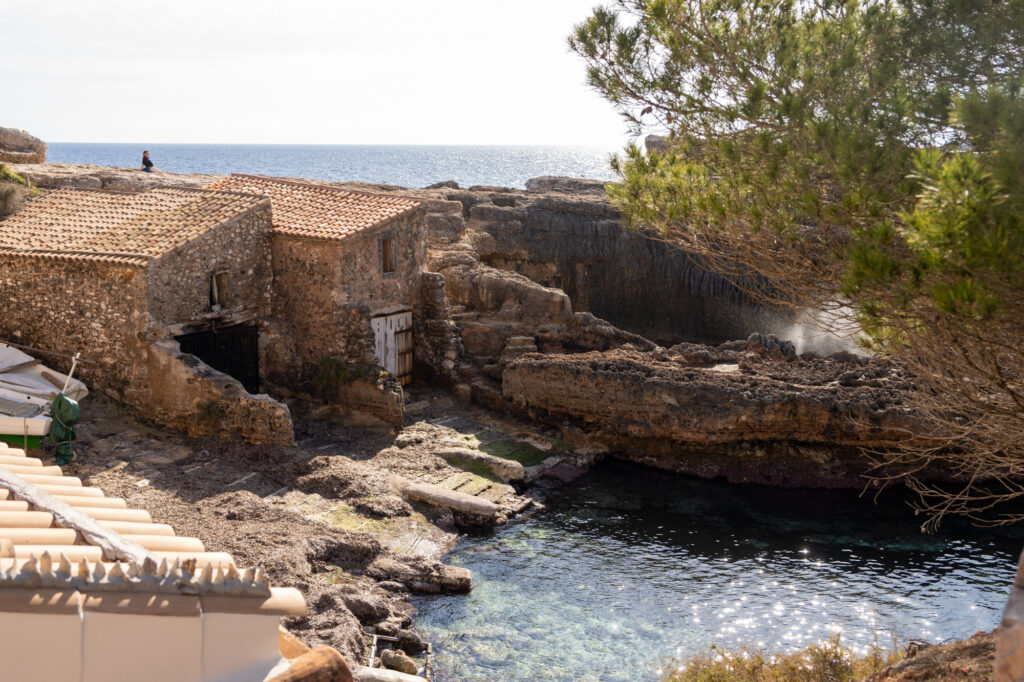
Best Mallorca Attractions and Activities
Our curated list of the best places to visit in Mallorca has been collated over many, many trips to the island – in all seasons!
If you’re trying to decide what to do in Mallorca, and where to stay, options abound.
Travellers of all ages will enjoy exploring the island’s cities with their notable landmarks, gastronomic markets, and abundant shopping options.
In the central region and to the west, hiking, cycling, and wine tasting are on offer around Valle de los Naranjos and the pretty town of Sóller.
Lively resorts in the north and south offer plenty of activities and entertainment, and along the east and southeast coasts, natural parks and charming fishing villages await, along with some of the island’s most beautiful unspoilt beaches.
Explore Palma de Mallorca’s Historic Centre
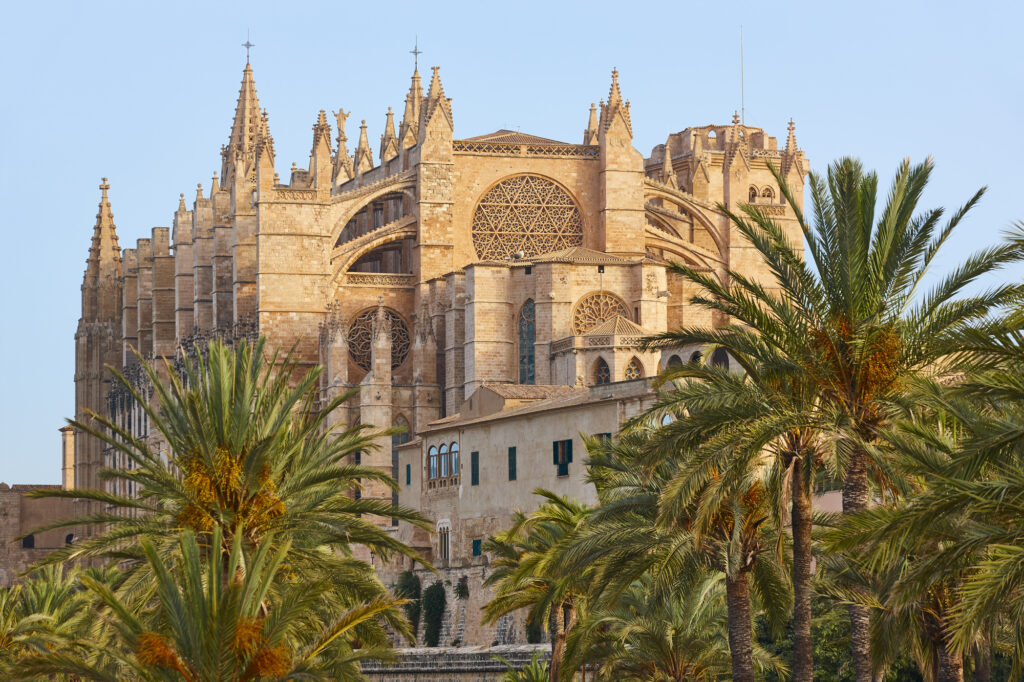
Palma is the island of Mallorca’s capital city, and it’s brimming with cultural wonders, beautiful architecture, and fabulous food and shopping.
One of the top sights in Mallorca is Cathedral-Basilica de Santa Maria de Mallorca – La Seu for short. It dates back to the early 1200s and showcases incredible Catalan Gothic-style architecture. Wander along palm-lined promenades admiring the exterior façade then venture inside to climb to the upper balcony for incredible views of the city.
Next door, the 14th-century Royal Palace of Almudaina dazzles with Moorish splendour. Step inside to discover grand rooms adorned with Flemish wall tapestries, suits of armour and displays of ancient artefacts.
A few minutes walk away, Palma’s historic centre is a top Mallorca bucket list destination for tourists. The area mesmerises with pastel-hued houses, arcaded squares, and tranquil plazas where tapas are served alfresco under centuries-old olive trees.
Top tour in Palma de Mallorca: Guided Tour of the Old Town
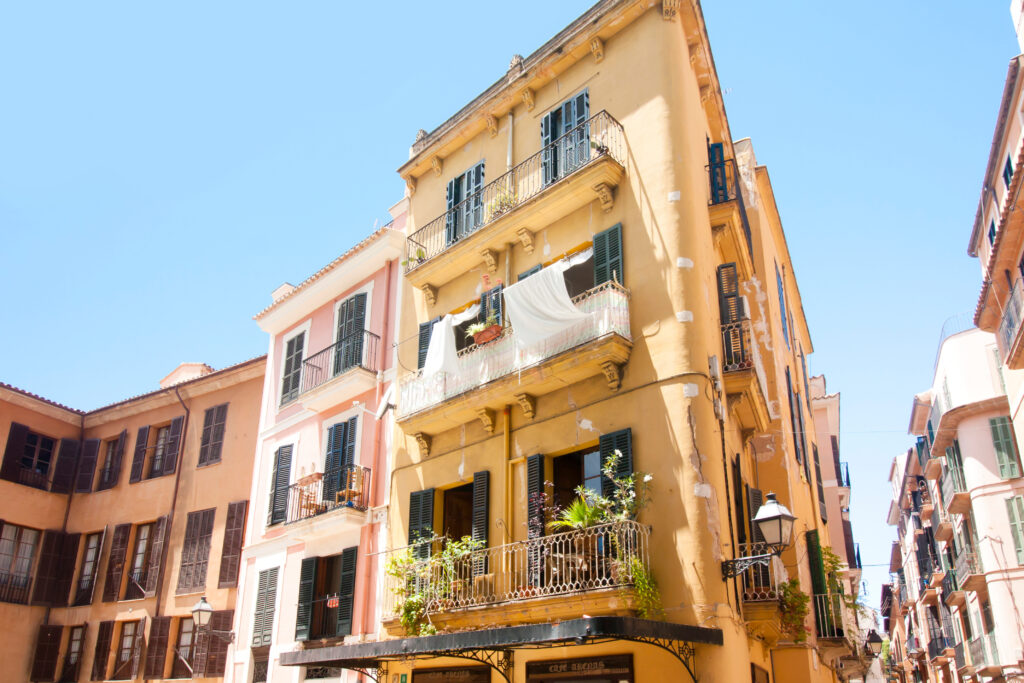
While walking along narrow lanes, stop off at Sant Fransecs and Santa Eulalia churches, discover Plaça de Cort and Plaça D’Espanya, and see Can Forteza Rey, a beautiful building festooned in Catalan Art Nouveau designs.
The shopping streets of Plaça Mayor, Carrer de Jaume II and Passeig del Born are great spots to pick up Mallorcan pearl jewellery and hand-woven baskets, or sample delicious ensaïmada pastries from a local pasteleria.
Afterwards, head for Parc de la Mar for incredible sunset views of La Seu Cathedral and the lagoon.
Relax on Mallorca’s Beautiful Sandy Beaches
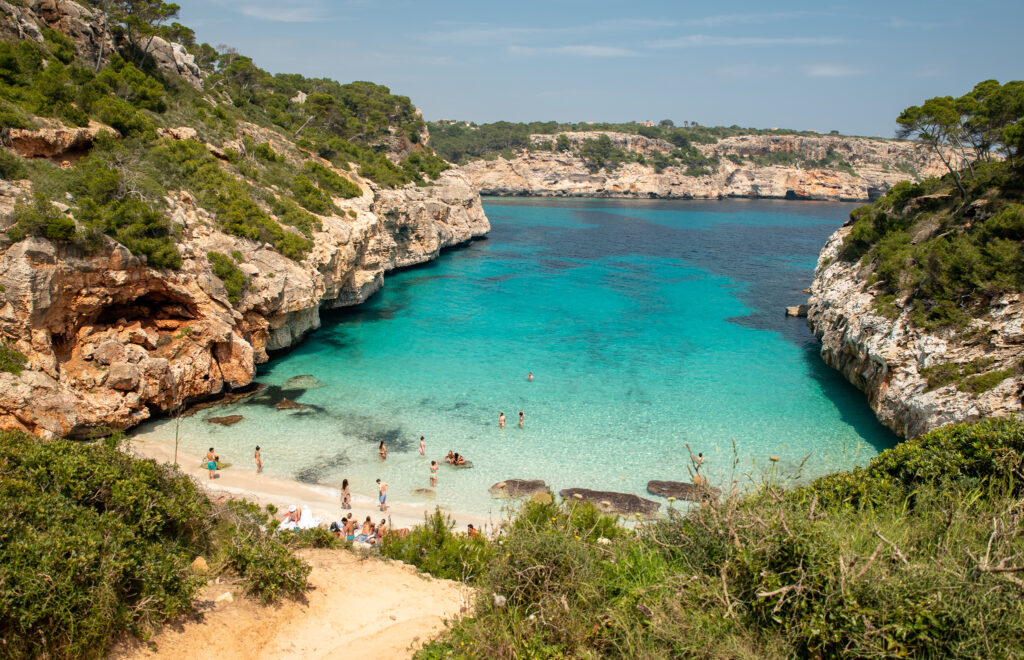
Mallorca is blessed with over 200 beaches, with many accessible by car or on foot.
If staying in the southeastern corner of Mallorca, Calo des Moro Beach is one of the most popular beaches in Mallorca. The small Blue Flag beach near Santanyi is protected by sheer cliffs, and turquoise shallow waters make it great for swimming and snorkelling. But it does get incredibly busy in the peak season, so perhaps save this beauty for visits in Spring or Autumn when the crowds subside.
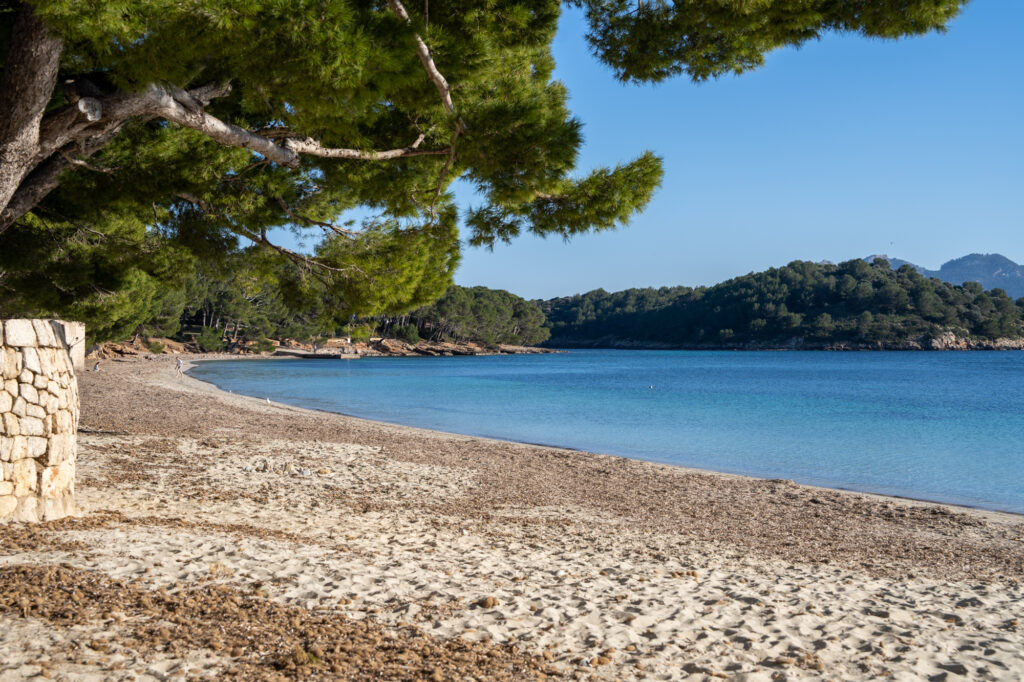
Holidaying in the north of the island? Cala Formentor is easily accessible from Puerto Pollensa by car, and with a pine-fringed backdrop, mountain landscapes, and a historic lighthouse nearby (see below), it’s a picture-perfect place to spend the day. The beach hires out windsurfing equipment, catamarans and pedal boats and there are two restaurants and a shop for snacks and drinks.
If you’re seeking a peaceful and cultural experience rolled into one, head for one of the top places to visit in Mallorca, Platja d’es Trenc. The soft white sands stretch for 11 kilometres, and the famous Salinas de Es Trenc sea salt works are located nearby with tours offered to learn more about local culture and industry.
Read More: Best Beaches in Mallorca, Spain
Climb the Mirador de El Colomer
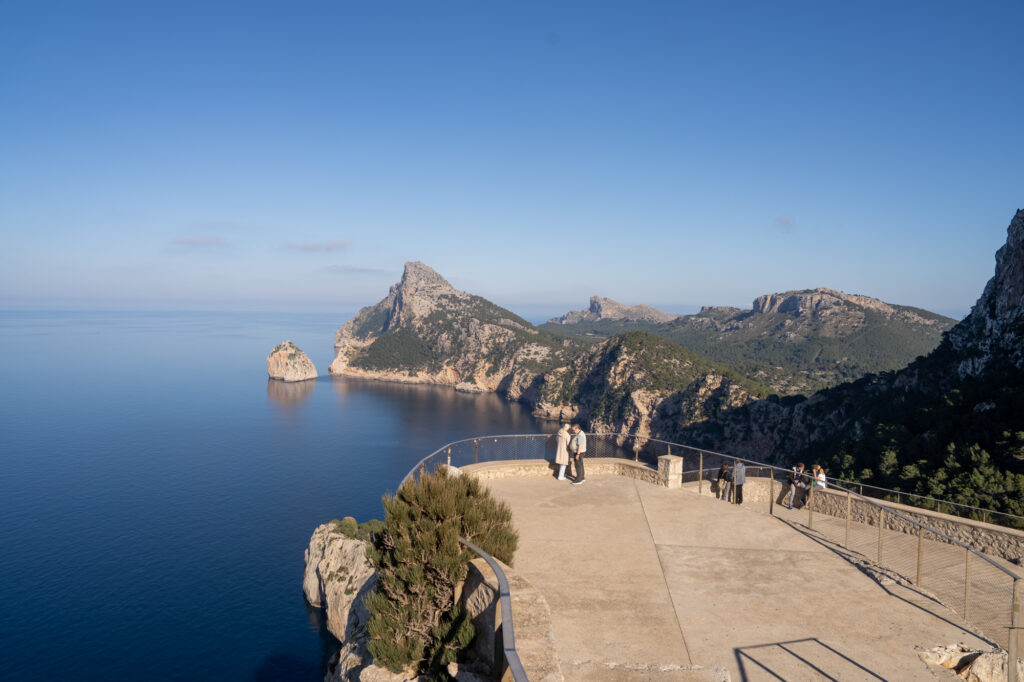
Mallorca’s most beautiful lookout point, the Mirador de El Colomer, is located near the northern tip of the island. Stop off here on your way to Formentor Beach, and you’ll be rewarded with the most spectacular panoramic views of the craggy coastline.
There’s a short walk along a guided trail to reach the viewpoint, with several platforms along the way to take it all in.
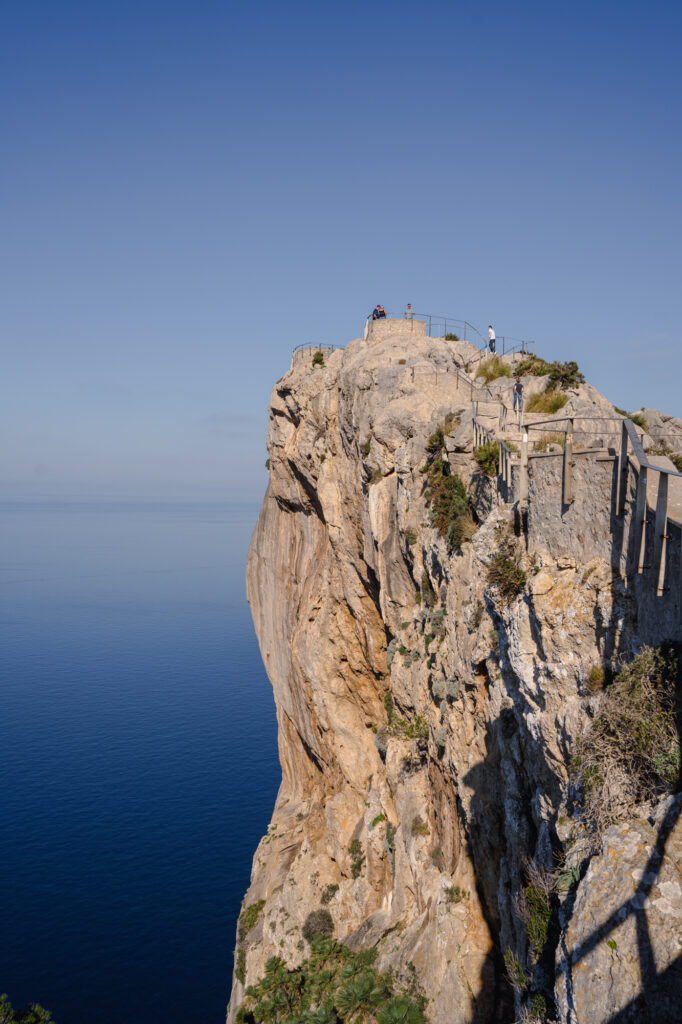
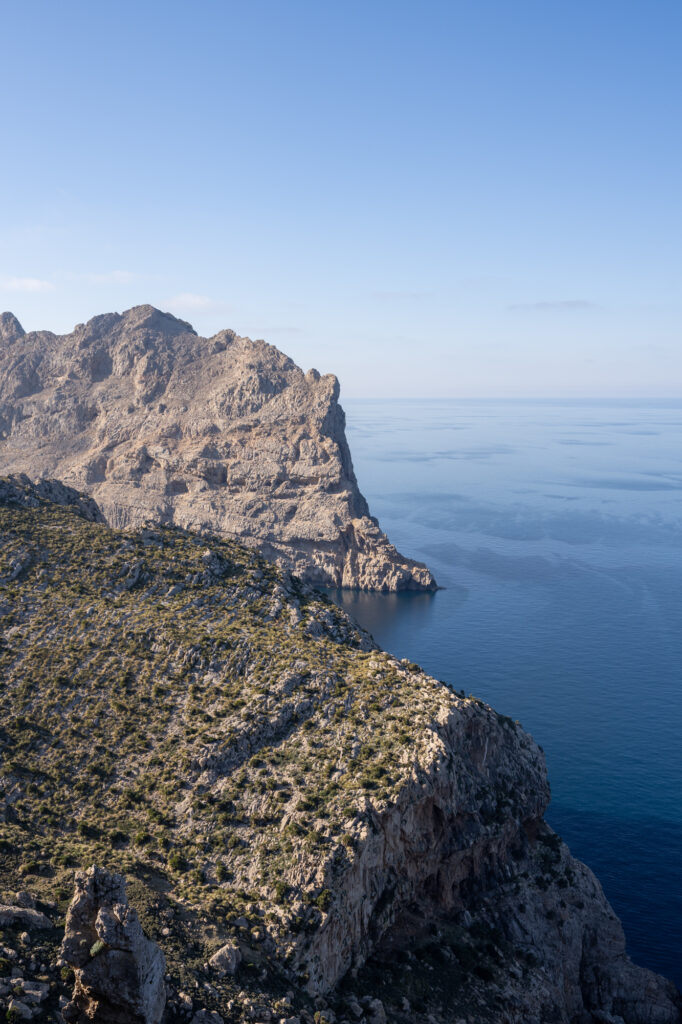
As much as the view to Punta Nau (directly in front of you) is the most striking, be sure to cast your eyes in all directions. You’ll see the Albercutx Watchtower standing guard over you to the east. And in the west, the rocky face of Alta d’en Vaquer greets you.
There’s a dedicated car park at the start of the trail, and if you don’t find a spot at first glance, just wait a few moments, as it’s not somewhere people linger for too long.
Wander the Sculpture Gardens at Museu sa Bassa Blanca
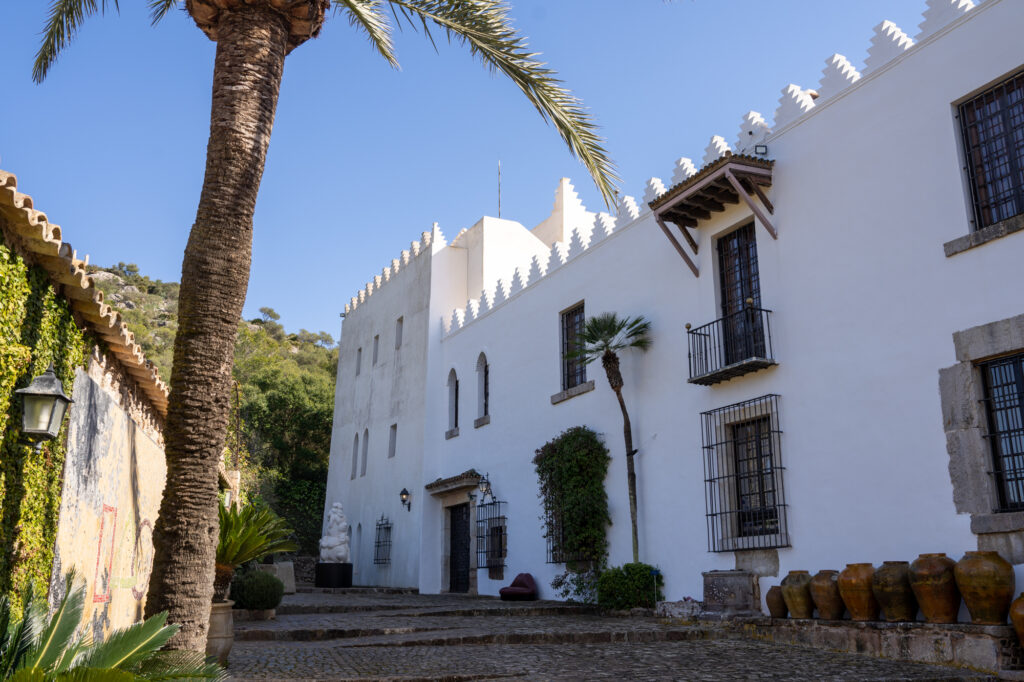
Tucked into a quiet cove on the Alcudia Peninsula, it’d be easy to miss Museu Sa Bassa Blanca on a tour of the north, but you’d be remiss to skip this unique Mallorcan experience.
Founded by artists Yannick & Ben Jakober, the museum incorporates Moorish architecture, historic portraits, as well as modern art and design.
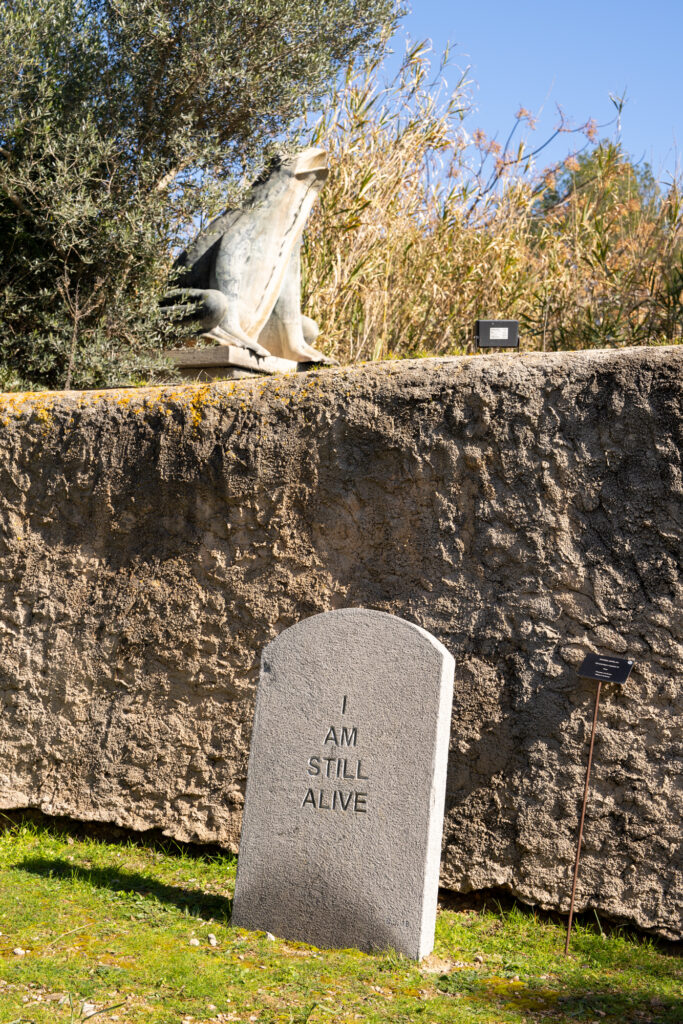
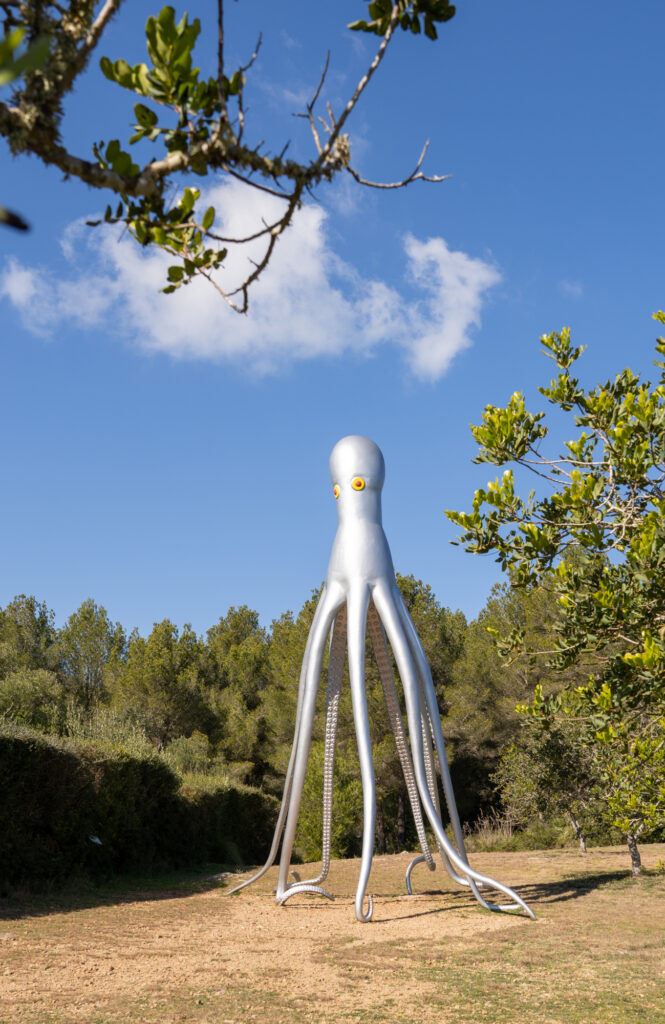
But my favourite part of this visit was the expansive gardens and sculpture park. The works on display, created by both the founders and contemporary artists, lend a playful twist to the Mallorcan landscapes, while not being at odds with it.
Allocate a couple of hours to explore the site, peruse the various galleries, and stop for a refreshment in the onsite cafe. There are several different entrance fees, depending on if you’d like to visit the gardens only, the galleries, or the house, and some require advanced reservation, so check online before you plan your visit.
Scenic Train from Palma to Sóller
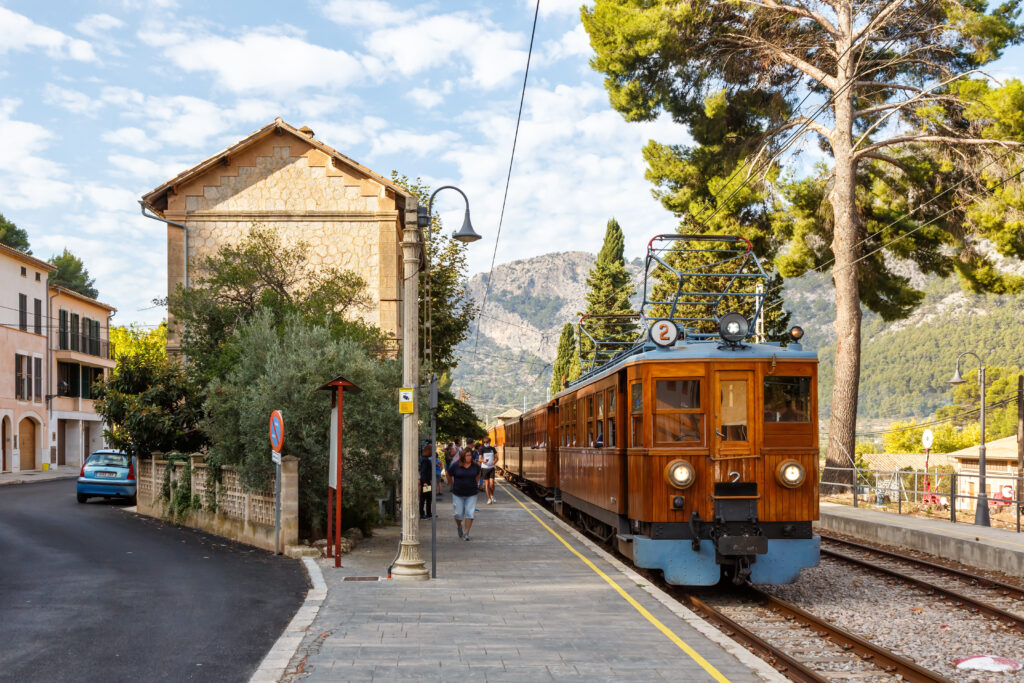
One of the best activities in Mallorca is travelling on the Tren de Sóller from Palma.
This enchanting journey on a narrow-gauge railway covers 27 kilometres and takes just an hour each way. The route passes through 13 tunnels and along tracks overlooking scenic Serra de Tramuntana landscapes, punctuated with orange trees and olive groves.
The town of Sóller is peppered with Art Nouveau architecture which can be seen around Plaza Constitució. The main square is home to Sant Bartomeu Church and the old town hall – a great place to soak up the atmosphere streetside, with a café con leche or bocadillo (local sandwich).
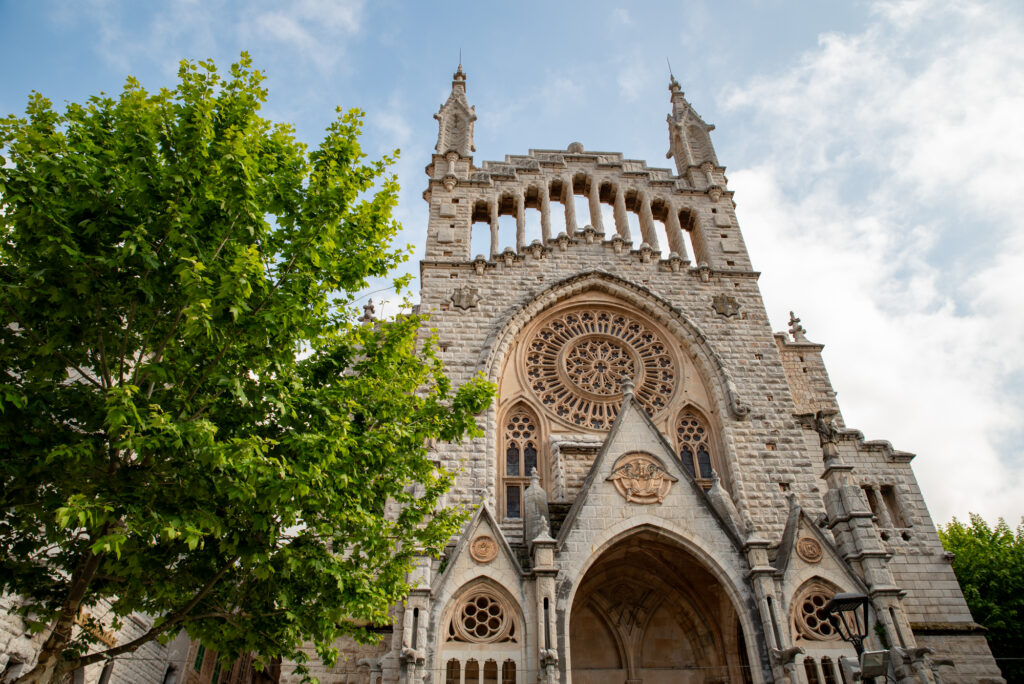
Nearby, cobbled pedestrian lanes hide colourful art studios and gourmet shops selling marmalade and olive oil, plus, on Saturday there’s a market selling handicrafts to browse.
There are also a handful of museums in Sóller. One highlight is Can Pruner set inside a historic mansion showcasing art collections by Kandinsky, Picasso, and Warhol.
Vintage Tram from Sóller to Port de Sóller
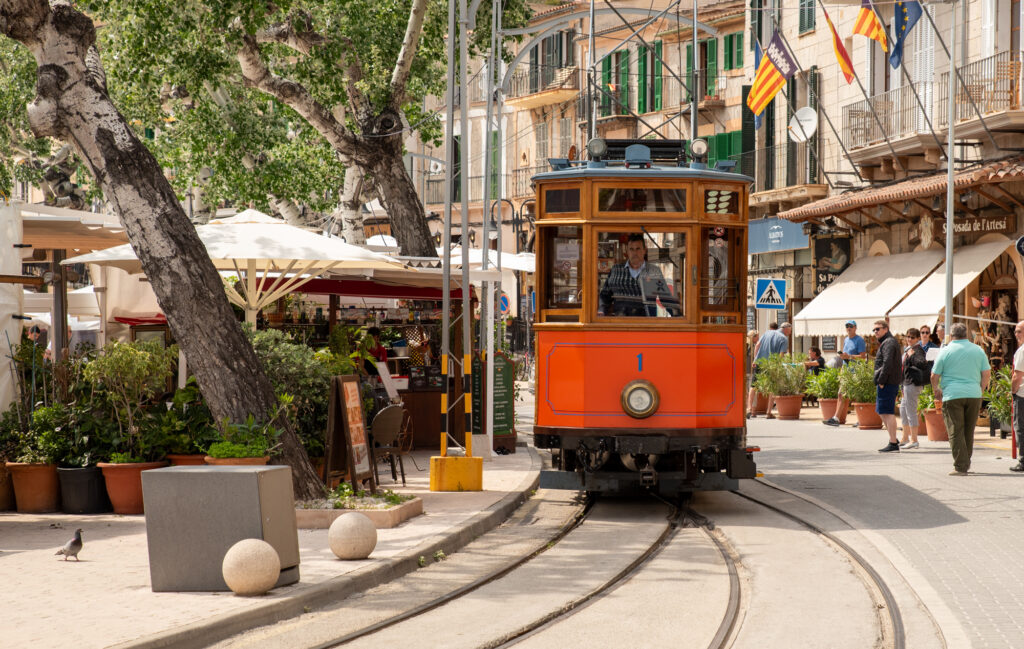
After visiting the town of Sóller, you can then jump on a vintage tram to take you down to the nearby Port de Sóller.
With the Tramuntana Mountains as its backdrop, Port de Sóller is a striking visual. Palm-fringed promenades are dotted around the marina with restaurants serving paella, tapas and fresh seafood dishes under awnings overlooking yachts and fishing boats.
There are three sandy beaches with sunbeds and parasols for hire, or if you’re looking for the best photo opportunities, climb the steps at the edge of the port to the hillside viewpoint.
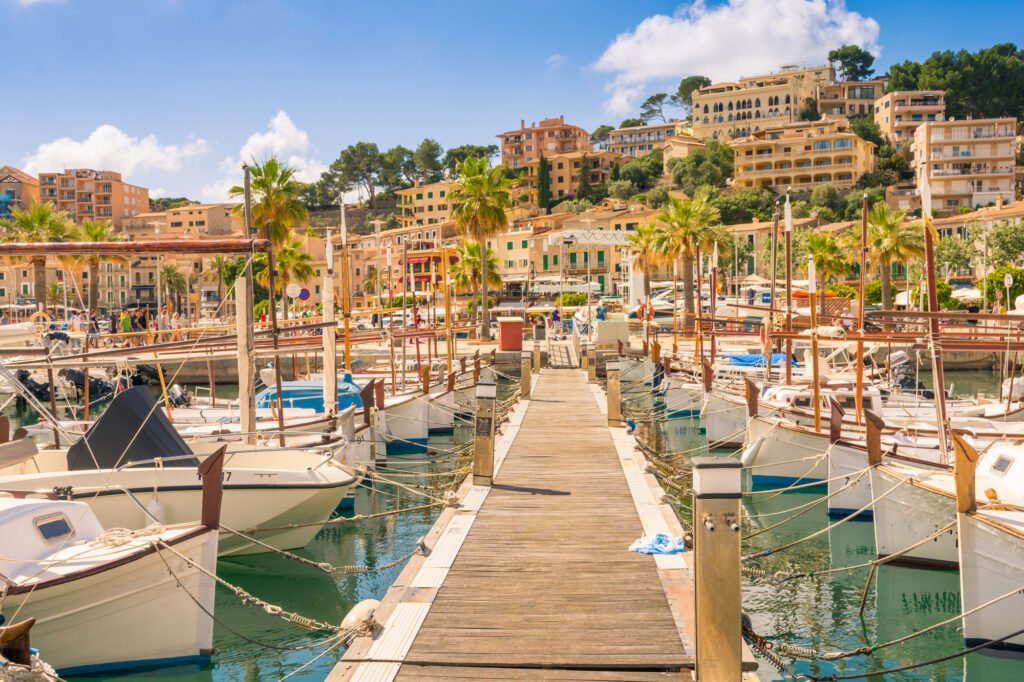
If time permits, hop on a boat trip to Sa Calobra to see the rugged Mallorcan coastline from a different perspective, and partake in a spot of snorkelling en route.
Allow plenty of time for your return journey to the train station during the high season as the queues for trams can be long. Also be aware that during winter months, the vintage trams operate on a reduced schedule.
Buy your combined train and tram tickets here.
Drive or Cycle to Sa Calobra
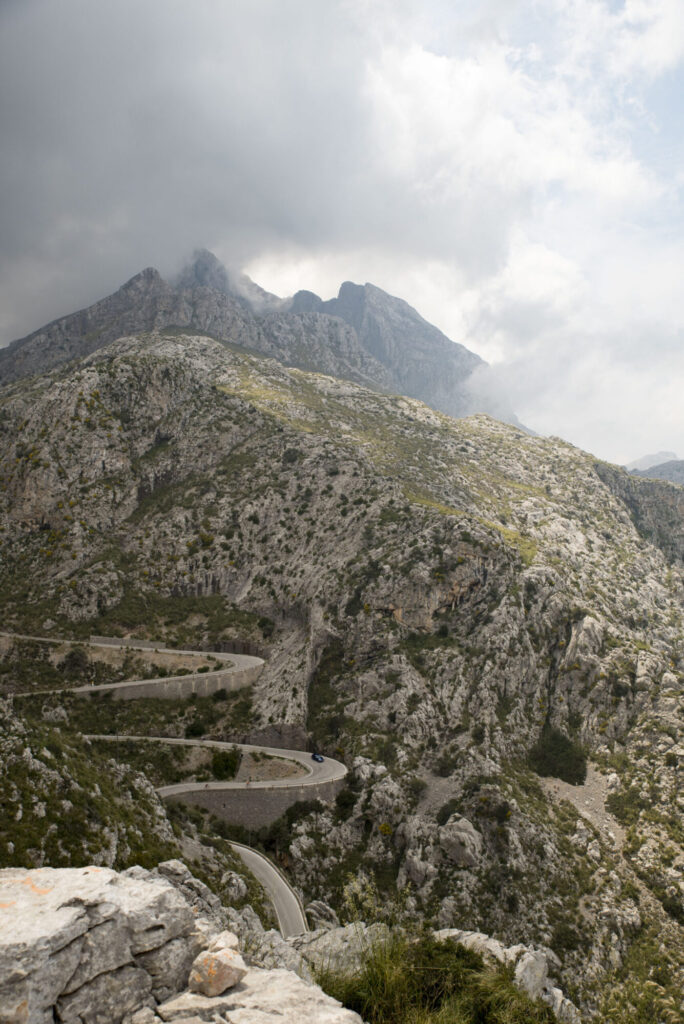
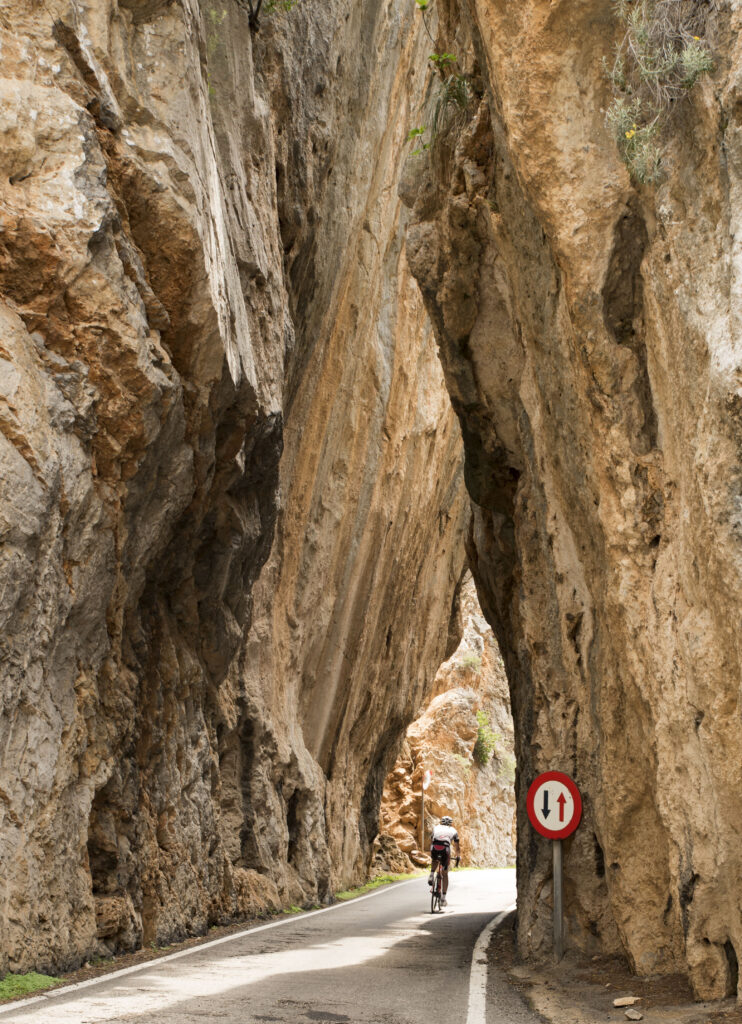
The road to Sa Calobra is one of Mallorca’s must-see places. It was designed in 1932 by the Spanish engineer Antonio Parietti and was, remarkably, constructed without the help of any modern machinery.
This road is a feat of engineering, popular with cyclists and tourists, but it’s not for the faint-hearted. The hillside route is strewn with narrow, steep, hairpin bends (12 in total) which wind their way down the mountainside.
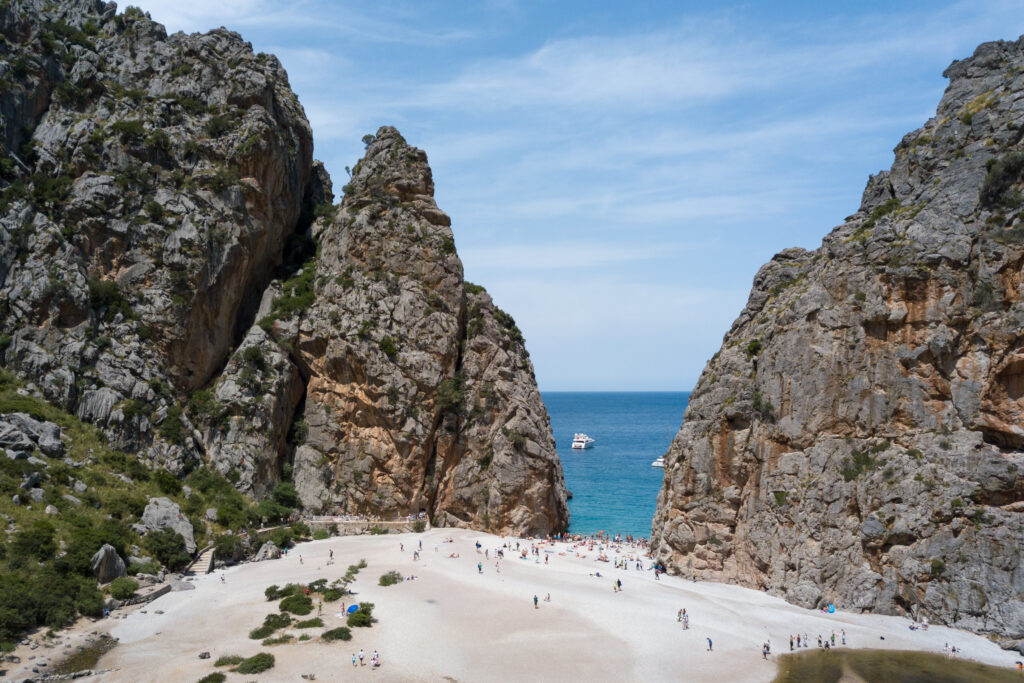
At the foot of the mountain, the charming small village of Sa Calobra awaits by the sea, with two beaches to swim and snorkel at. Platja de Torrent de Pareis is the most famous due to its unique shape and position, sandwiched between tall rocky cliffs. Meanwhile, Platja de Sa Calobra sits in front of the 50-metre-long village. It’s possible to walk from one to the other via a waterfront promenade and a long tunnel carved into the rocks.
Sa Calobra is a great place to relax, visitors can sample typical Mallorquin dishes or stop for a drink in the handful of restaurants by the water’s edge.
Wander through Jardines de Alfabia
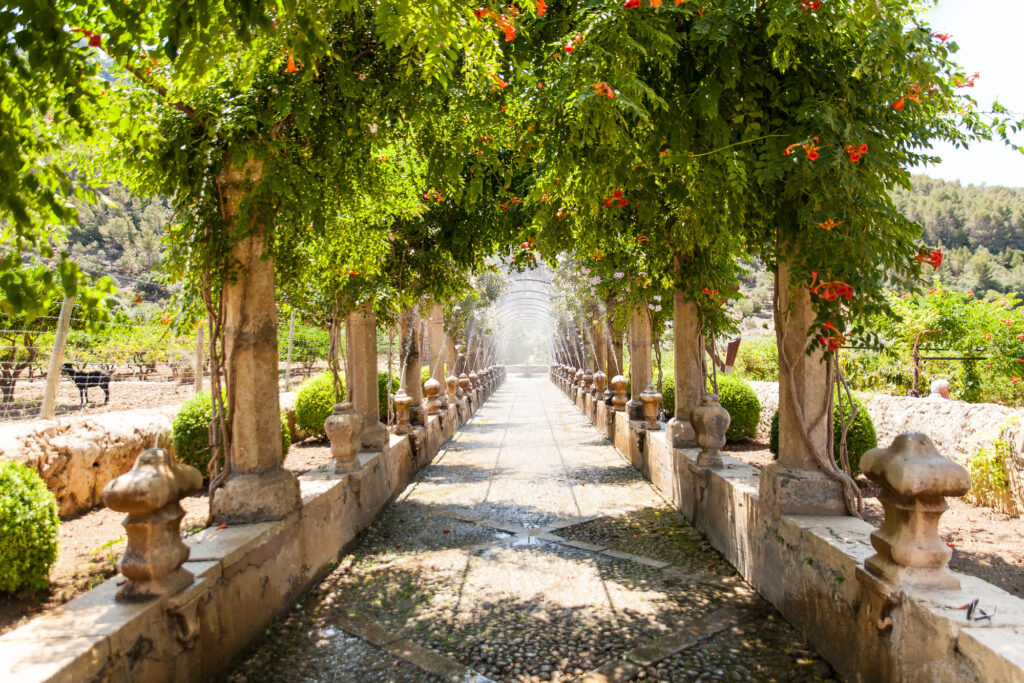
One of the best places to go in Mallorca for a relaxing day in nature, is to Jardines de Alfabia. Hidden away in the mountains of Bunyola, these gardens date back to Moorish times and were already established in 1229.
This unique oasis is a tranquil space with ornate water fountains, lily ponds, and endemic flora and fauna to observe.
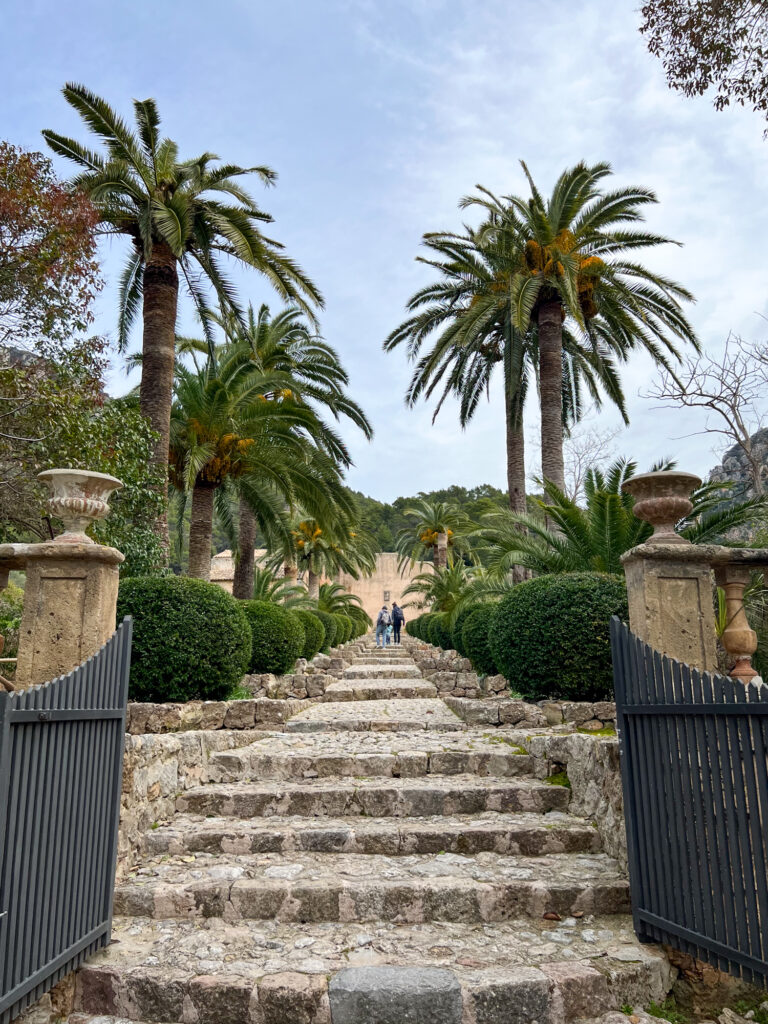
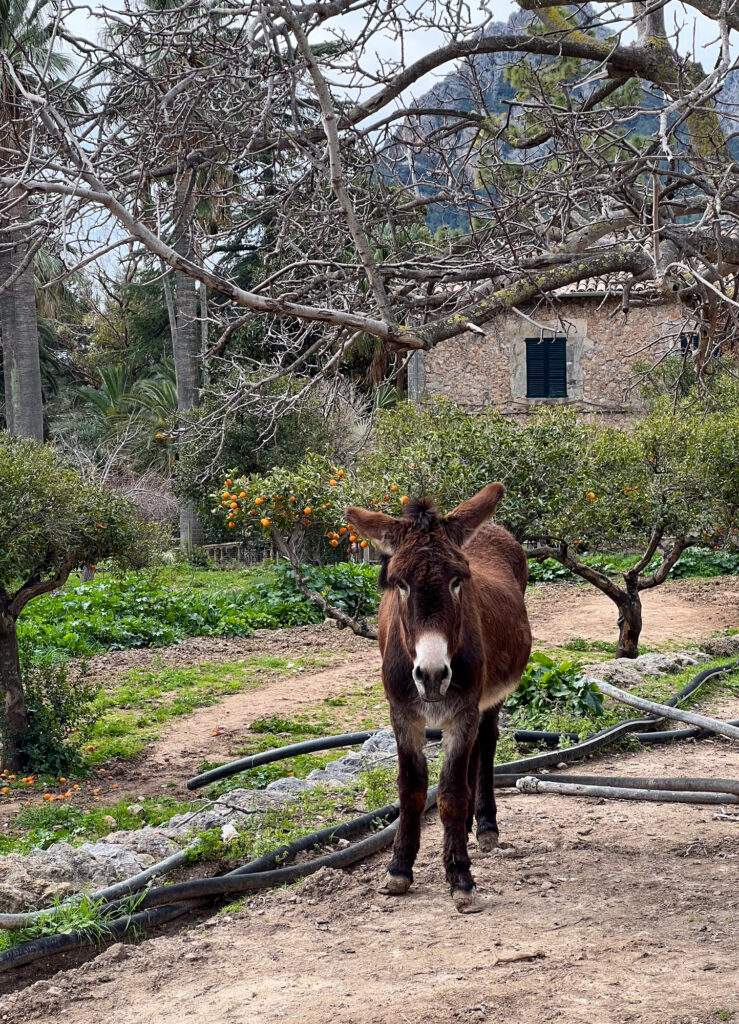
Explore the historic house, featuring elements of different architectural periods, ranging from Arabic to Gothic, Renaissance and Rococo. Marvel at the frescoes and murals depicting regions of Mallorca and walk along palm-lined avenues, connecting with nature – imagining life here in days gone by.
In the café, sit and enjoy a glass of freshly squeezed orange juice surrounded by wildflowers. It’s apparently the best juice in Mallorca, made from fruit from nearby Valle de los Naranjos, (Valley of the Oranges).
Experience Mallorca’s Best Hiking Routes
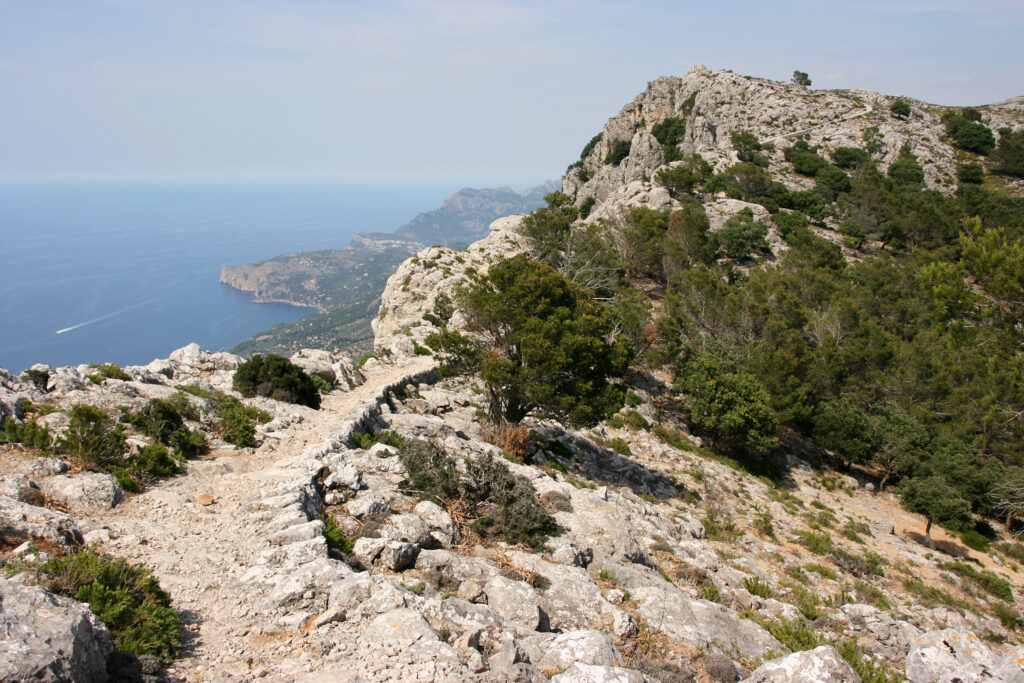
Hiking is one of the best activities in Mallorca to enjoy solo, as a couple or as part of a group expedition. The island’s rugged coastline and dramatic mountain landscapes appeal to outdoor enthusiasts from all over the world.
Hardcore hikers can attempt the GR221 Ruta de Pedra en Sec from Port D’Andratx to Puerto Pollensa. The trial traverses through the UNESCO World Heritage Tramuntana Mountain Range. Ancient pathways are separated into stages covering a mammoth 135km in total, and for those wishing to complete part, or the entire journey, there are comfortable ‘refugios’ (hostels) along the route.
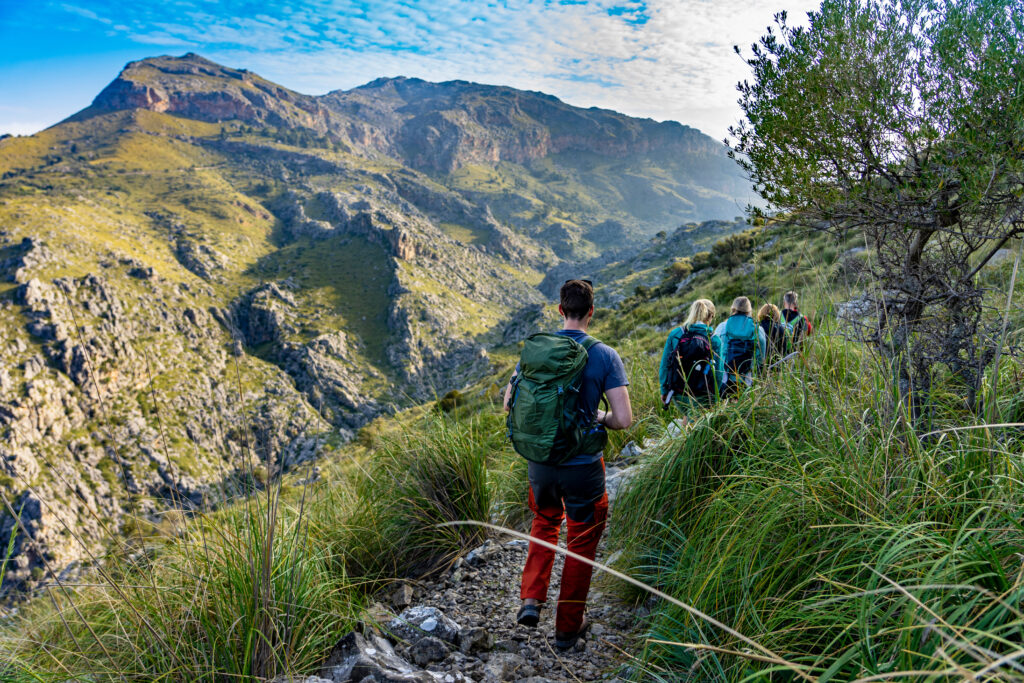
Torrent de Pareis Gorge trail is another favourite. This challenging route transports hikers from Escorca down to the village and sandy beach of Sa Calobra for a refreshing dip in the sea.
For novice hikers, there are several shorter trails near Sóller. Trekkers can take in some of Mallorca’s most beautiful villages on a circular route while walking easy-to-navigate, picturesque pathways.
Learn About Biodiversity at Parc Natural de S’Albufera
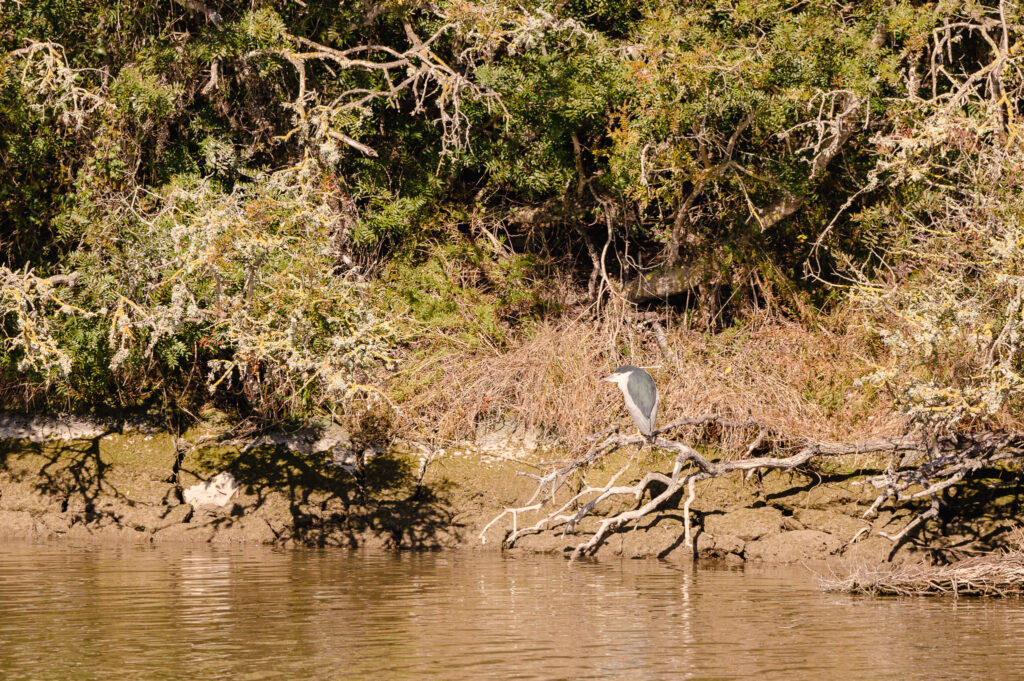
Step into the Parc Natural de s’Albufera and you’ll feel a million miles from the resort atmosphere the Spanish Island is synonymous with. Established in 1988, the park is home to over 300 species of birds, as well as a diverse range of flora and fauna.
Call into the visitor’s booth upon arrival to pick up a visitor’s permit and a handy map before heading out to explore the network of trails and boardwalks through the marshlands. Keep your eyes peeled to see how many different species you can spot!
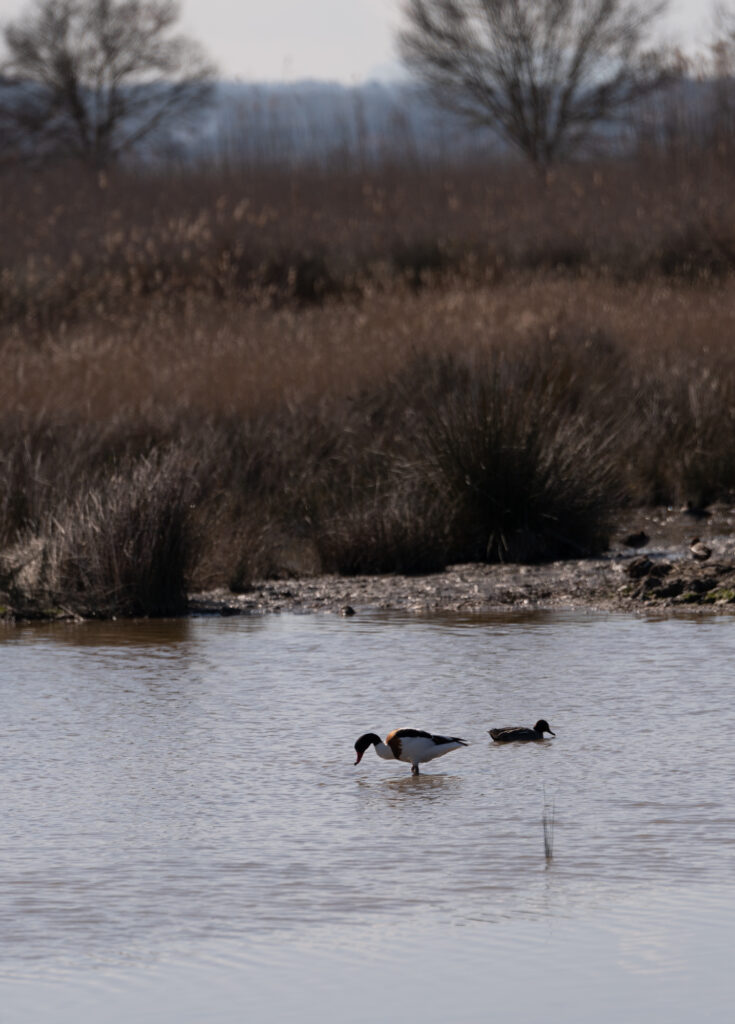
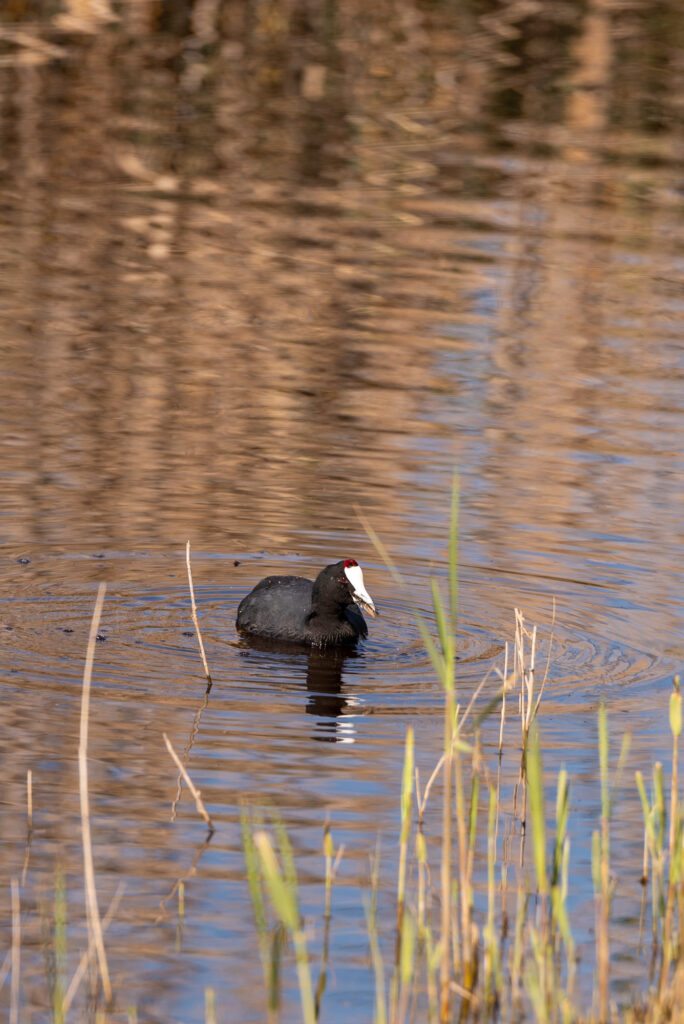
There are several marked trails to choose from within the 1700-hectare park, and bird-watching bunkers are strategically positioned so you can stealthily watch as the wildlife goes about its business before you.
Entrance is free, and parking is available nearby – although it is limited, so you may have to look for a car park in one of the nearby residential streets.
See the Town and Monastery of Valldemossa
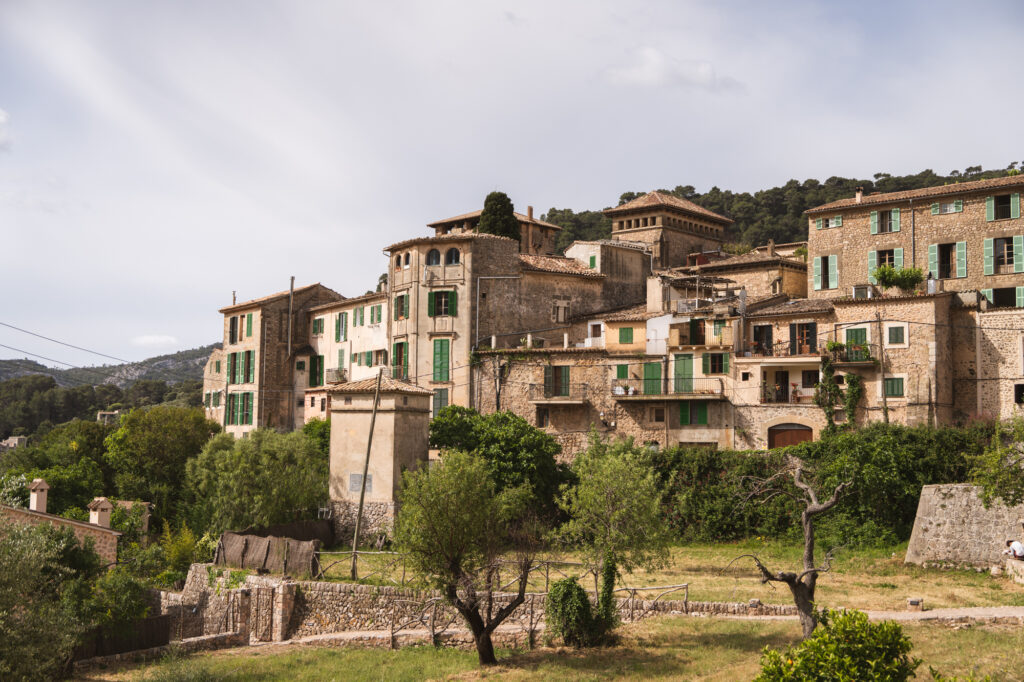
Valldemossa is a charming, old-world town of Moorish heritage, nestled in the western Mallorca mountain ranges around 20 kilometres from Palma. Old blonde stone buildings with emerald green shutters sprawl across terraced landscapes with cypress trees and olive groves sprinkled in between.
This is one of the best places to see in Mallorca. The peaceful streets of the town are lined with quaint churches, speciality shops, galleries and traditional restaurants, and doorways are adorned with brightly coloured flowers in plant pots.
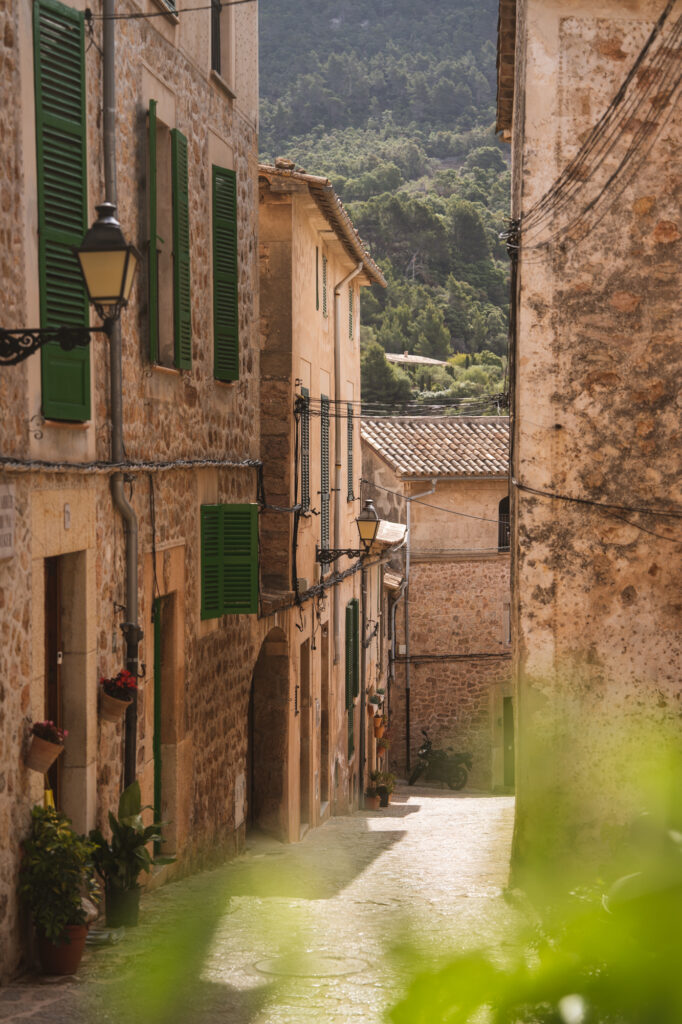
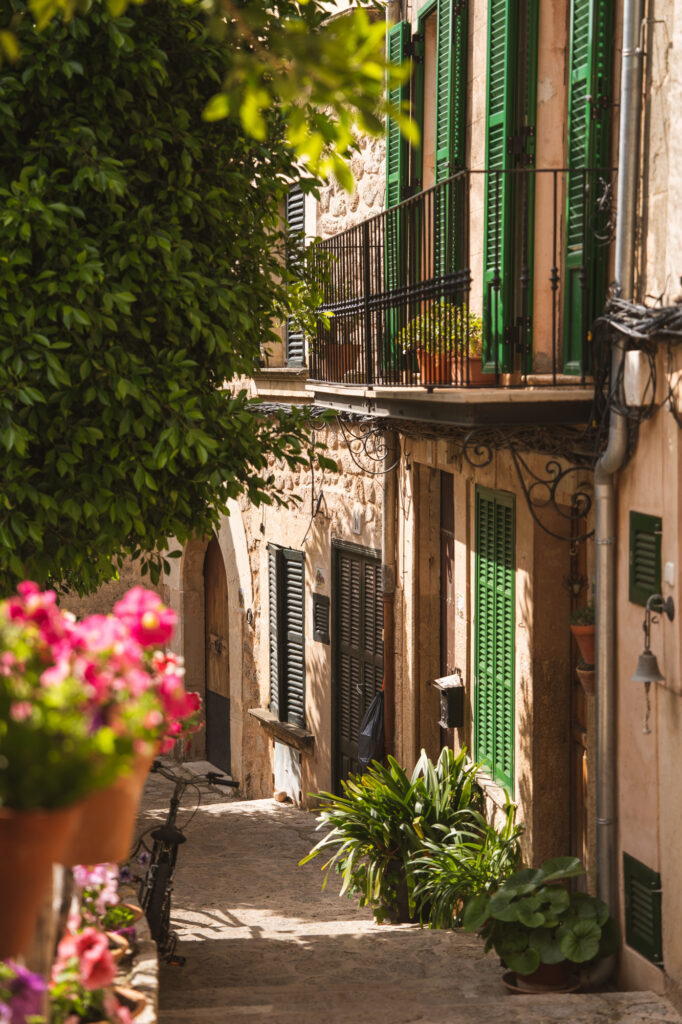
Sip a glass of wine overlooking the countryside and pay a visit to the Royal Carthusian Monastery which played host to composer Frederic Chopin and author George Sand many years ago. They created some of their best works in the town and visitors can take a tour to learn about the history of this magnificent structure and see where the pair stayed during their winter in Mallorca.
Catch the Sunset at Port de Valldemossa
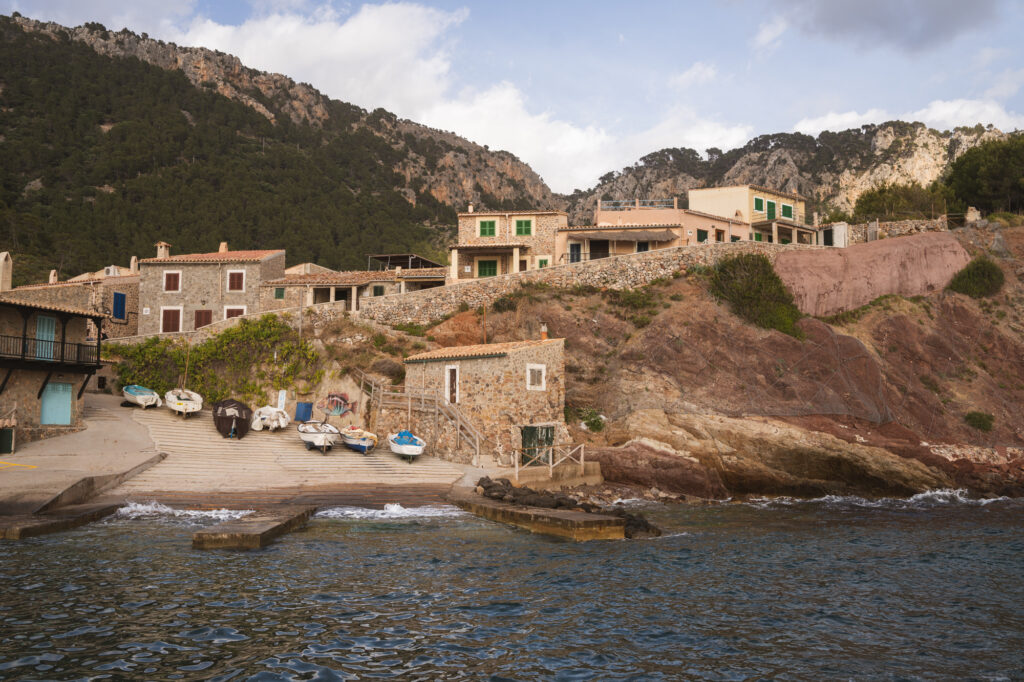
Port de Valldemossa is a small seaside settlement on the coast beneath the hilltop town. And, as you may expect, the drive here is all downhill! Take your time to navigate the sometimes nerve-wracking narrow road, and take care through the hairpin turns.
But the adventurous drive is worth it to reach this traditional fishing village with a small port and beach.
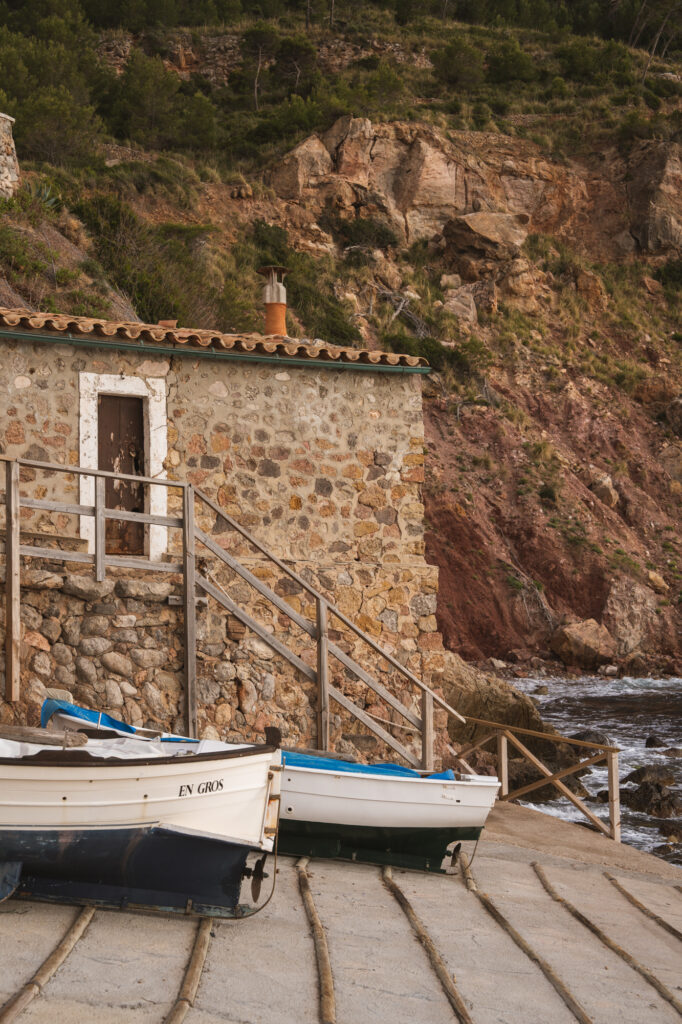
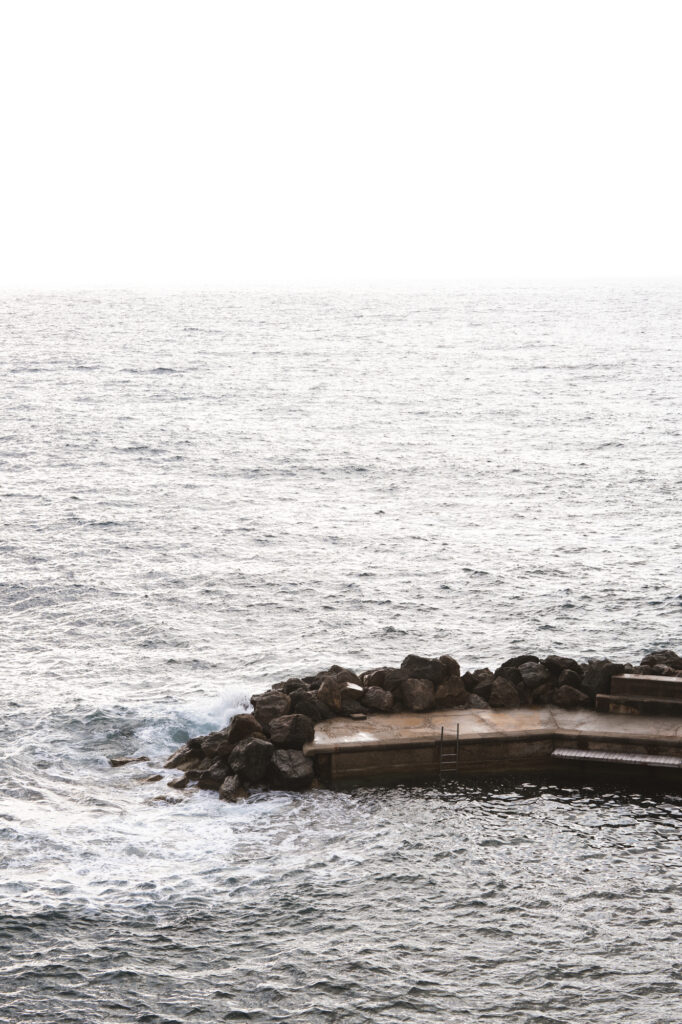
You can rent kayaks or paddle boards here to explore this wild part of the coast, or simply visit for a lazy afternoon by the water. It’s one of the lesser-known gems in Mallorca – of which there aren’t many left!
There’s a seasonal restaurant, Es Port, where you can enjoy an evening meal before watching one of the most spectacular sunsets on the island.
Historic Tour of the Castell de Bellver
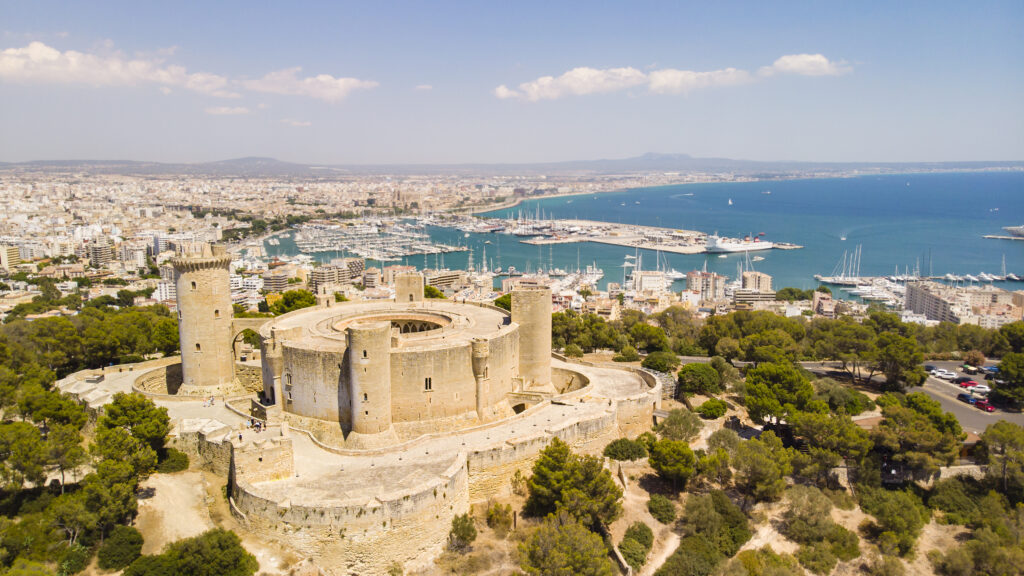
The name Bellver translates to ‘beautiful view’ in the Catalan language and it’s easy to see why the castle took on this name. Impressive 14th-century Bellver Castle is one of the best things to see in Mallorca. It sits atop a hillside, three kilometres west of Palma (you can take the Hop-On-Hop-Off Bus to reach it), surrounded by fragrant pine forests overlooking the bay.
The construction of this Gothic-style masterpiece was undertaken by Pere Salva in 1311, the same architect who designed the Royal Palace of Almudaina in the capital. The castle consists of three tall towers overlooking an arched courtyard with a well in the centre, and it served as a residence for Mallorcan kings before being utilised as a military prison until the mid-20th century.
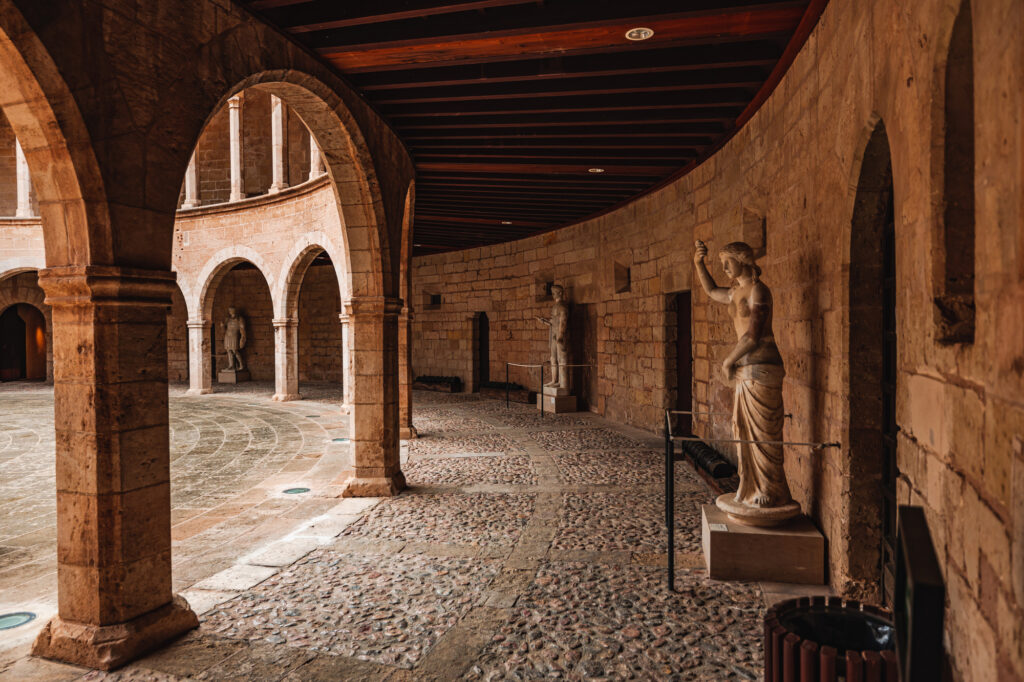
Today, it is home to the city’s Museum of Municipal History which displays artefacts from Talaiotic, Roman, Arabic and Spanish eras.
One major benefit of visiting Bellver Castle is its 360-degree views. The vistas are a must see in Mallorca and visitors can walk along the ramparts to gain epic photographs.
Boat Ride and Concert in Cuevas del Drach
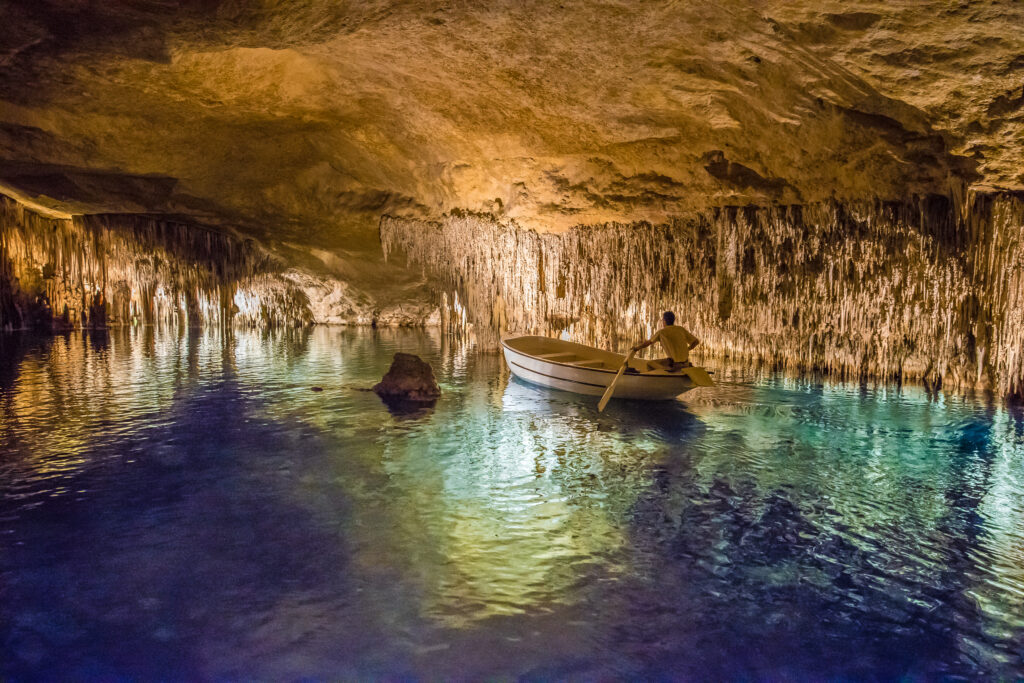
If you’re wondering what to see in Mallorca with kids, a trip to Cuevas del Drach near Porto Cristo is sure to keep younger travellers enthralled.
The caves, which date back centuries, became popular in the mid-1930s after a Catalan engineer placed an electric lighting system within.
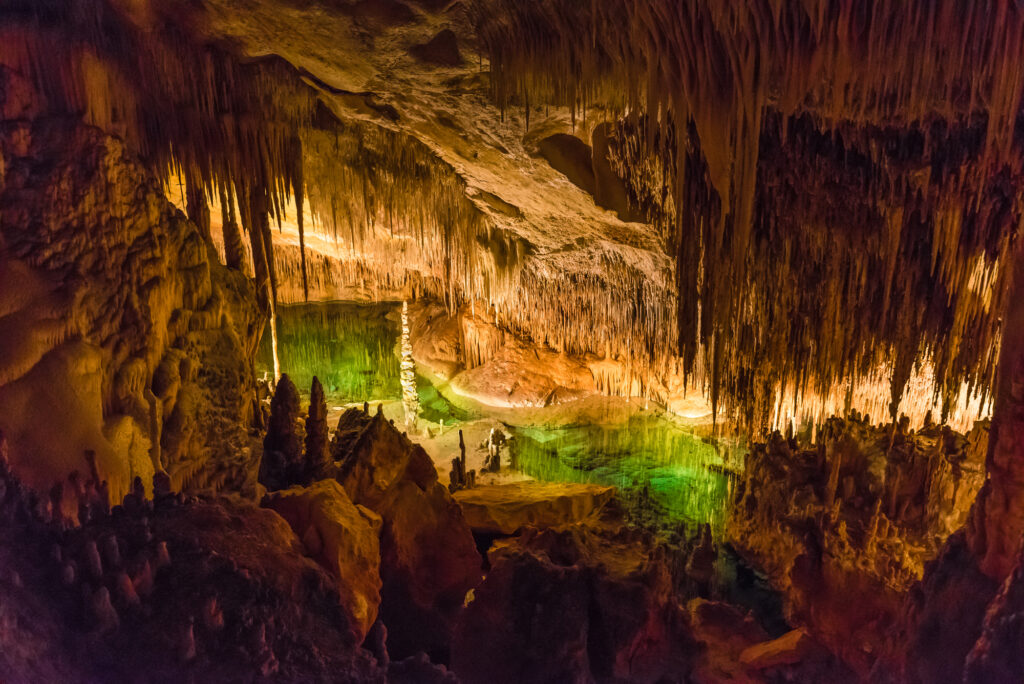
They are home to one of the world’s largest underwater lakes – Lake Martel – which can be explored by boat. See stalagmites and stalactites cast in a golden glow as they hang like rocky icicles from the ceiling, and while gliding along the lake, listen to a live classical music concert performed by a skilled quartet.
The best way to enjoy this experience is to book an advance ticket (bookable up to 30 days in advance), and the caves are open year-round except for Christmas Day and New Year’s Day. If you’re staying in Palma or Alcudia without a car, you can also book this tour which includes transport to the caves.
Stroll the Stairs of Pollença
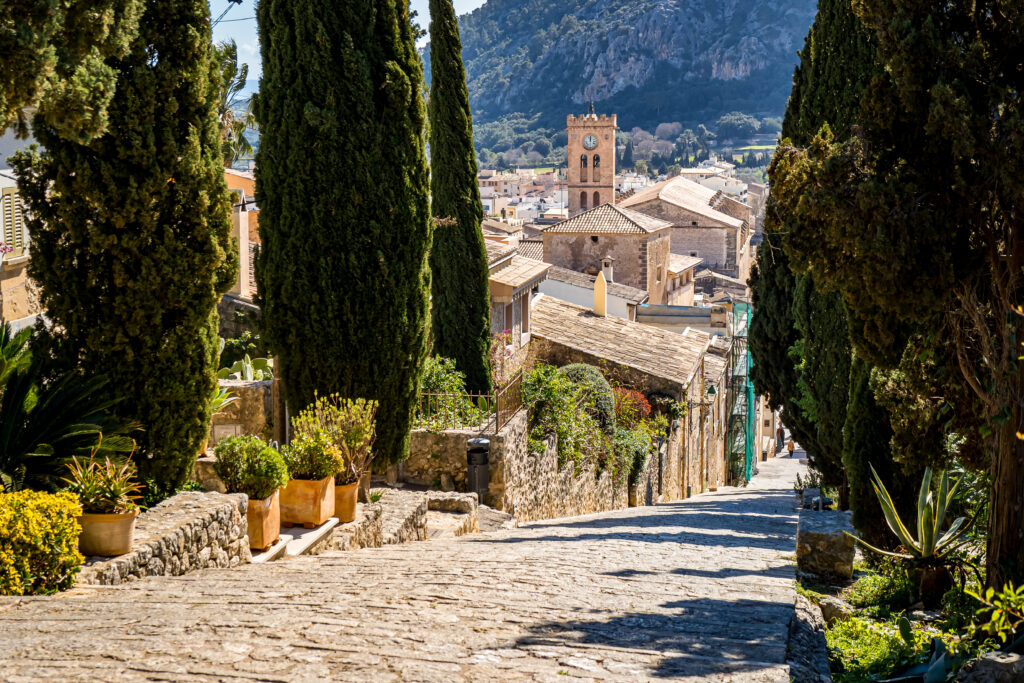
Otherwise known as the Calle de los 365 Escalones (street of 365 steps), the Pollença stairs are an iconic landmark in the north of the island. Leading from the old town to the Calvary Chapel, they take centre stage in one of the island’s most important cultural and religious events, the Davallement procession at Easter time.
If visiting at other times of the year, it’s worth the – quite literally – breathtaking walk to the top for the spectacular views, both en route and at the Mirador on the summit.
Stroll through the town centre afterwards to catch your breath and perhaps enjoy a cool drink in a shady square. And before you leave, take a small detour to see the Roman bridge nearby.
Spend a Lazy Day at Cala Figuera
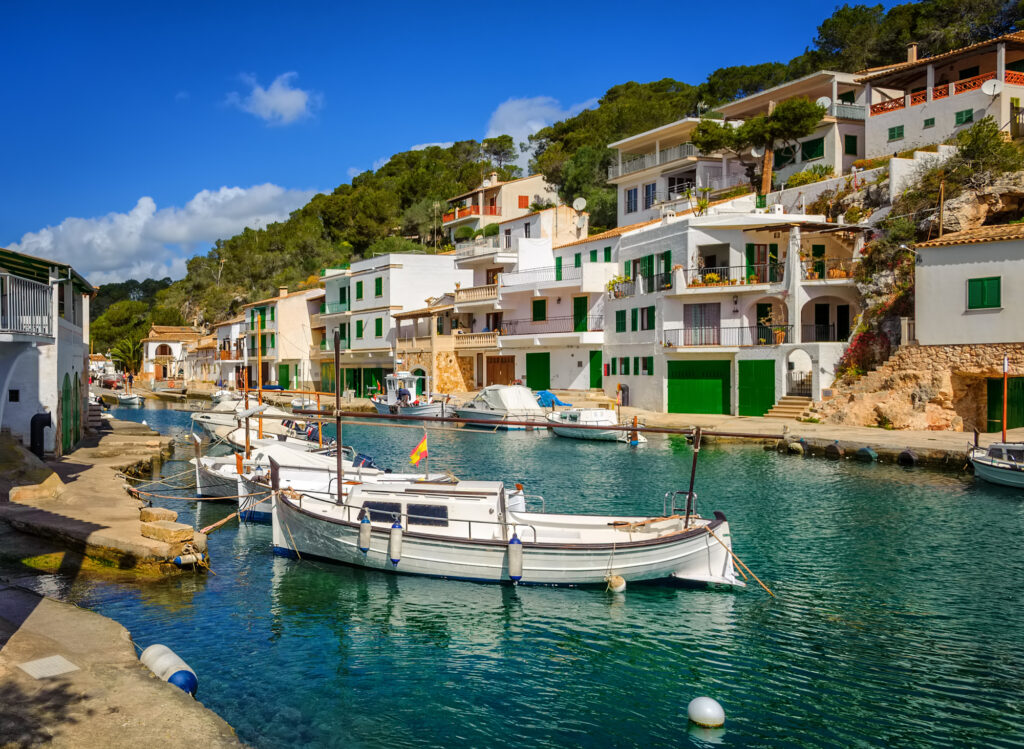
Cala Figuera in southeast Mallorca is an alluring canvas of turquoise blues and pistachio greens, and the perfect place to spend a relaxing day.
White-washed houses with bold green shutters sweep down fig tree-laced hillsides and small local restaurants serve fresh seafood dishes with a Mallorquin twist, as resident cats lounge in the shade, unperturbed by incoming tourists.
The picture-postcard village retains an old-world charm, and several hours can be lost sipping wine, while watching fishermen mending their nets by boats at the water’s edge.
Combine the trip with a visit to Santanyi’s food, craft, and textile market, held on Wednesday and Saturday mornings, just five minutes away by car.
Take in the Views from Far de Formentor
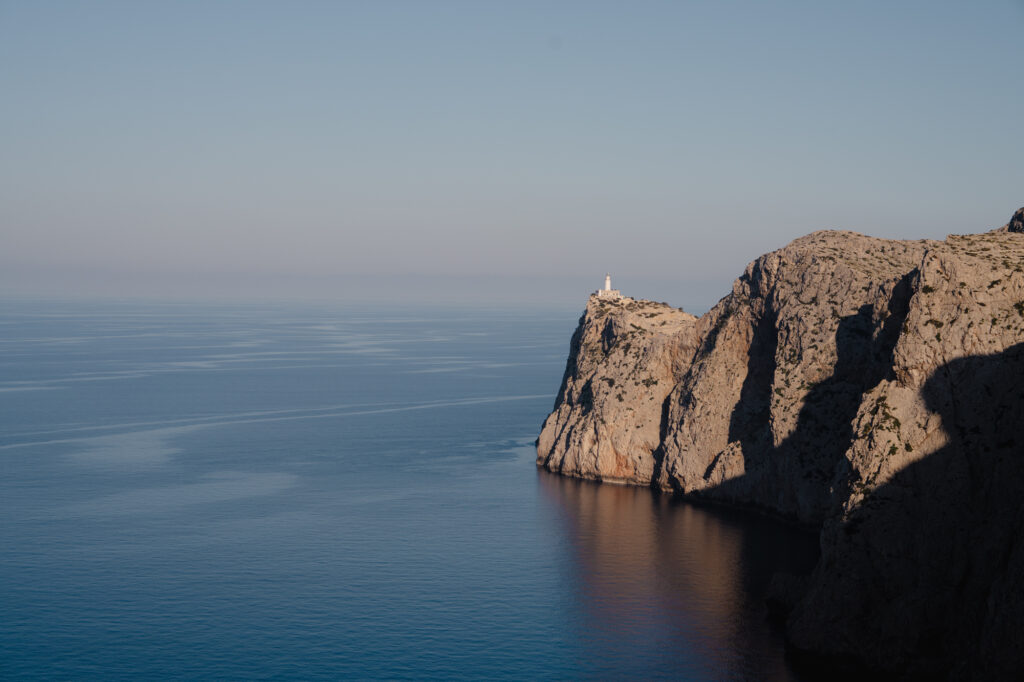
At the northernmost tip of Mallorca, the Formentor lighthouse has stood proud since 1863. Perched on the edge of a 200-meter cliff, it cuts a striking scene against the endless blues of the Mediterranean Sea that surrounds it.
The drive to reach the lighthouse is an adventure in itself, and one that offers stunning vistas of a relatively untouched part of the island. The road is a favourite among cyclists, so take your time as you navigate the winding and narrow road. Or hire an electric bike and give it a go yourself!
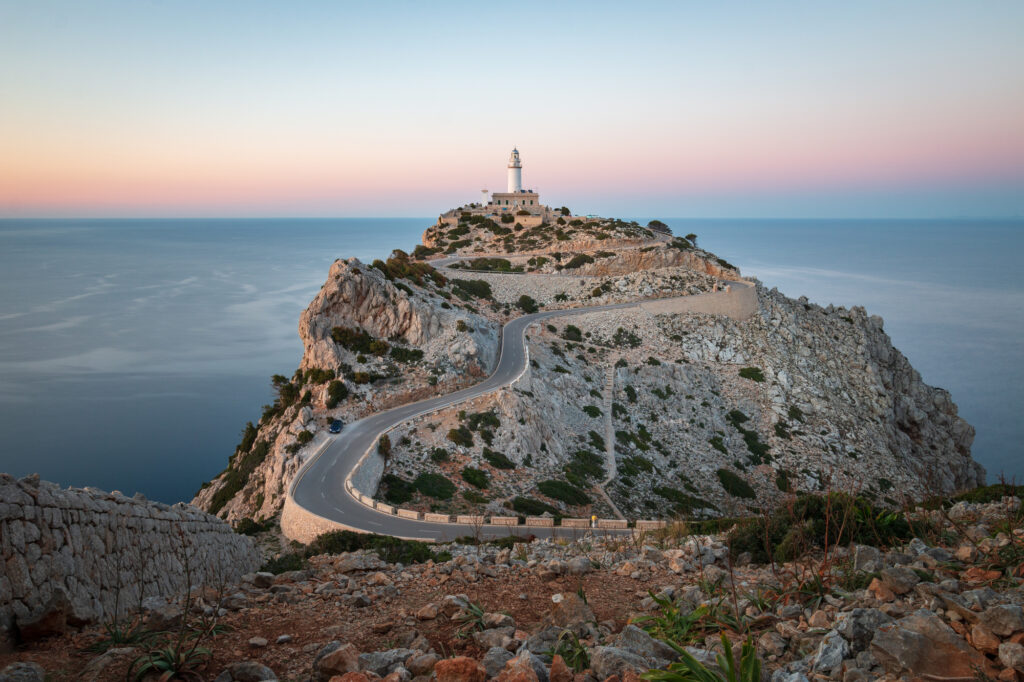
Do note, that there is very limited parking at the lighthouse which sometimes leads to congestion near the end of the journey. To help combat this, they’ve now put restrictions in place during the summer months, meaning you’ll have to leave the car at Formentor Beach and take one of the provided shuttle buses up to the lighthouse instead.
I’d recommend leaving this one for off-season visits instead.
Discover the Creative Hideaway of Deià
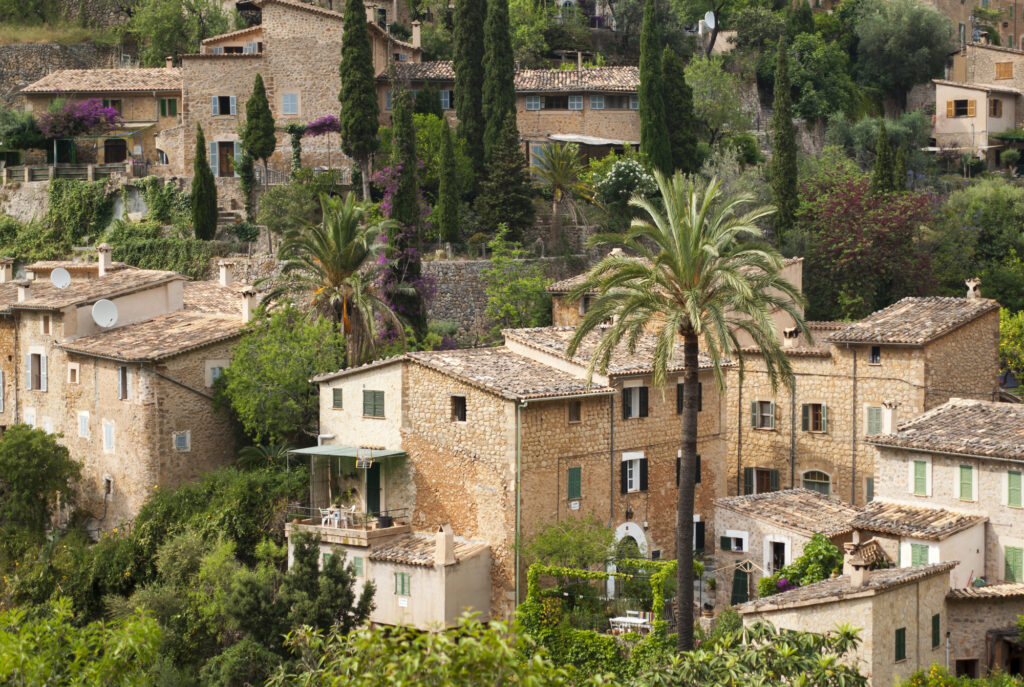
The small town of Deià hugs the mountainside in northwest Mallorca. It’s home to poets, artists and writers, who gain inspiration from the scenic vistas, cobbled streets and bougainvillaea-draped houses.
Immerse yourself in Deià’s bohemian spirit by walking the narrow streets, observing honey-coloured stone houses with blue shutters and scenic backdrops of lush mountains.
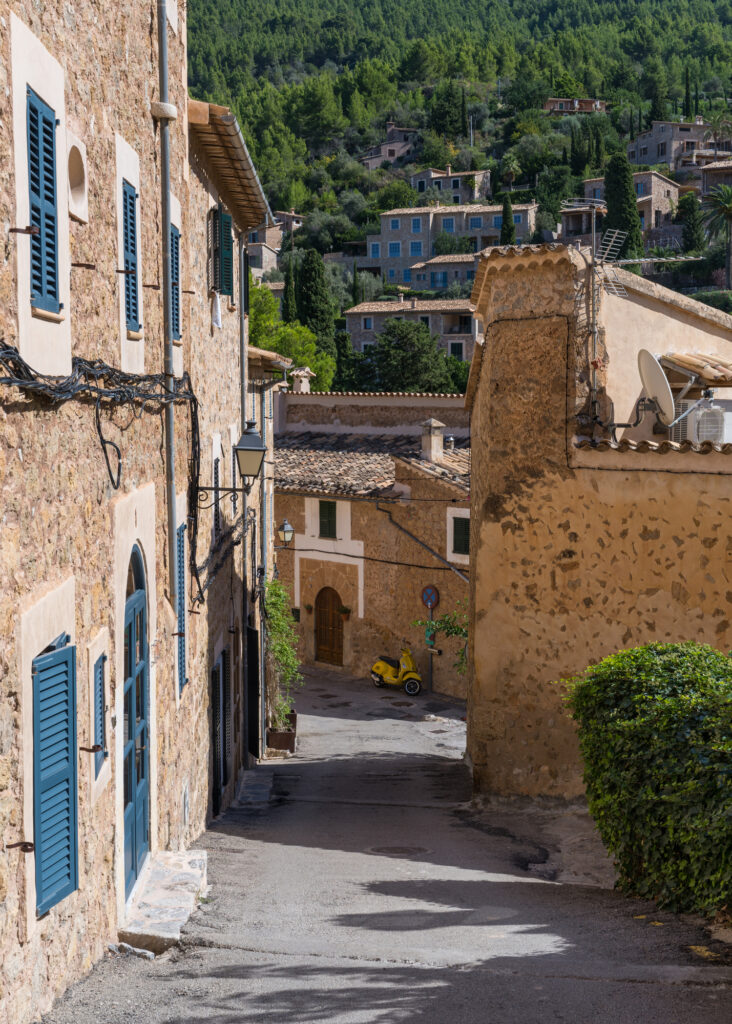
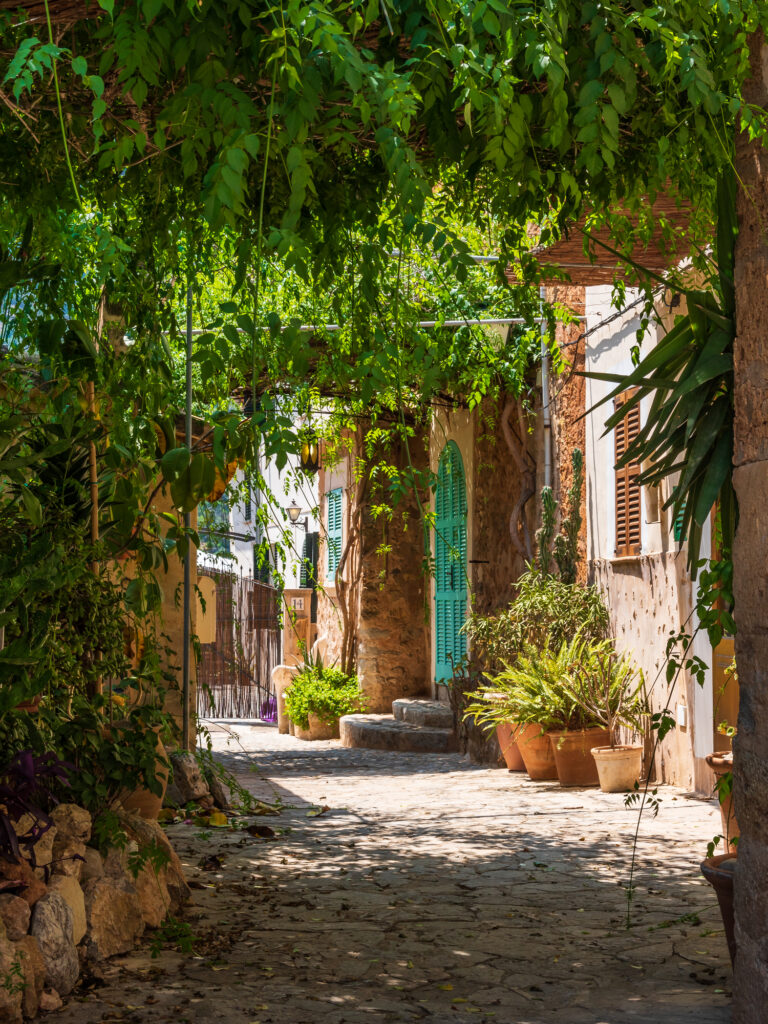
The author Robert Graves lived here in the late 1920s, and fans of his novels including ‘I, Claudius’, can see his former home. Deià also boasts an interesting Archaeological Museum set inside an 18th-century mill.
For the best views across the Tramuntana Mountains, head for St. John the Baptist Church on the hillside, before sitting down to a meal on the terrace of El Olivo within the renowned La Residencia hotel.
Wine Tasting in the Tramuntana Mountains
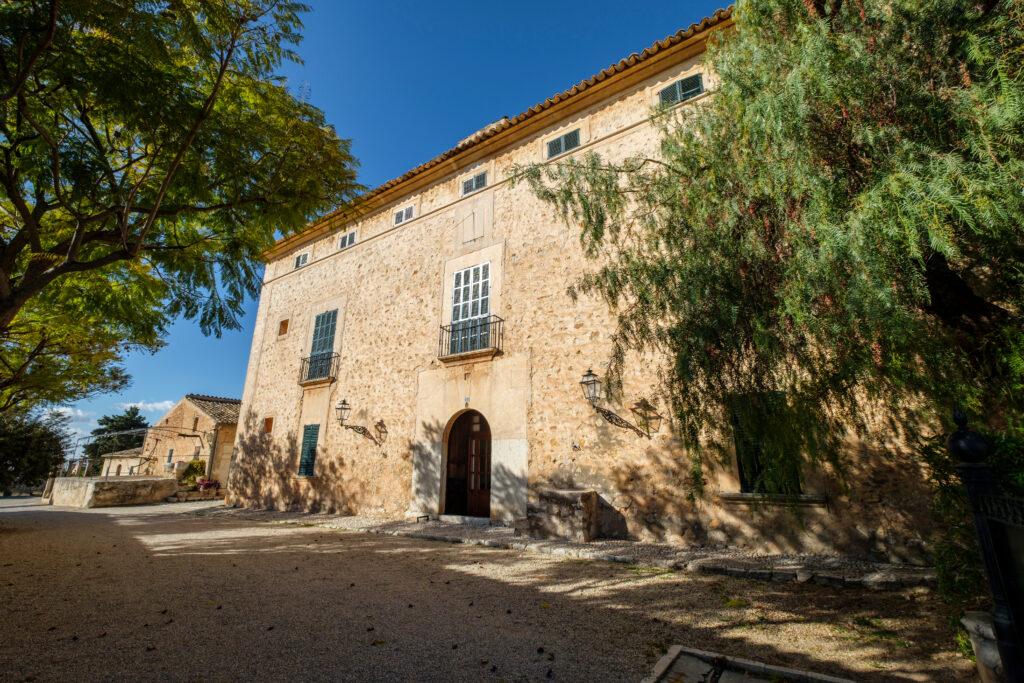
Bodega Ribas is located in the historic wine region of Consell, half an hour north of Palma. This is the oldest winery in Mallorca, founded in 1711 at the foot of the Tramuntana Mountains.
Their wines are a result of Mantonegro, Gargollasa and Prensal Blanc grape varieties and they produce two brand lines.
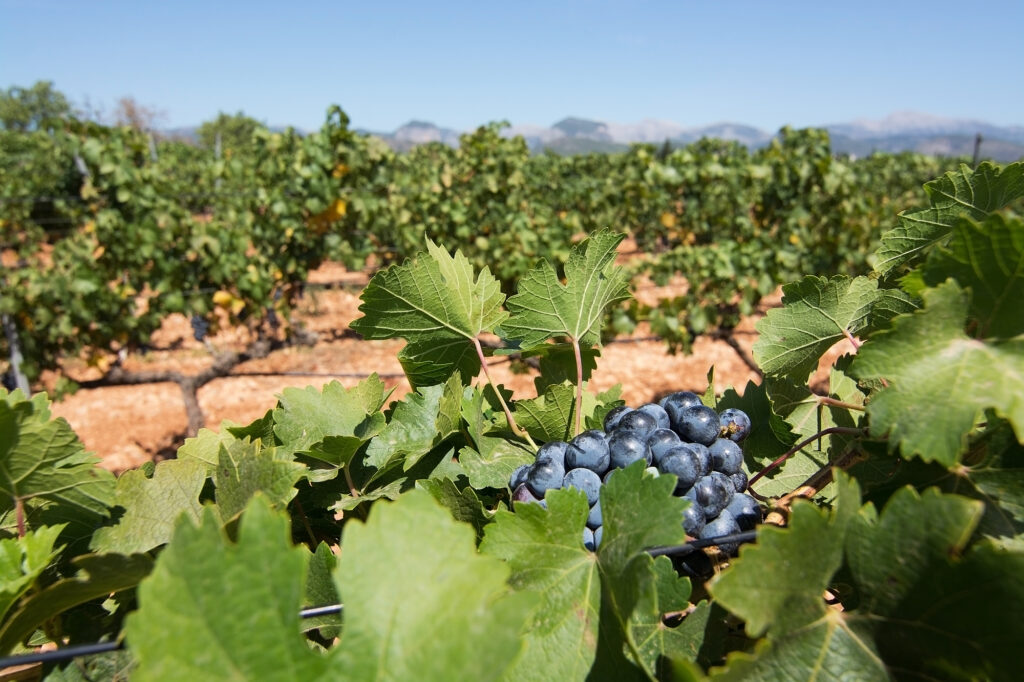
The best way to sample many of their offerings is on a guided tour. The owners offer a walk-through of the winery where the history and winemaking process are explained, and this is followed up with wine tasting in the garden or inside the 18th-century stately home.
Wine connoisseurs can opt to try the Ribas Rosat wine made with Mantonegro grapes or Sio Negre, a red wine produced as a tribute to the owner’s grandmother. Alternatively, pair a wine tasting with local cheeses and charcuterie or with a set dinner menu.
Explore Underground Worlds at Coves d’Artà
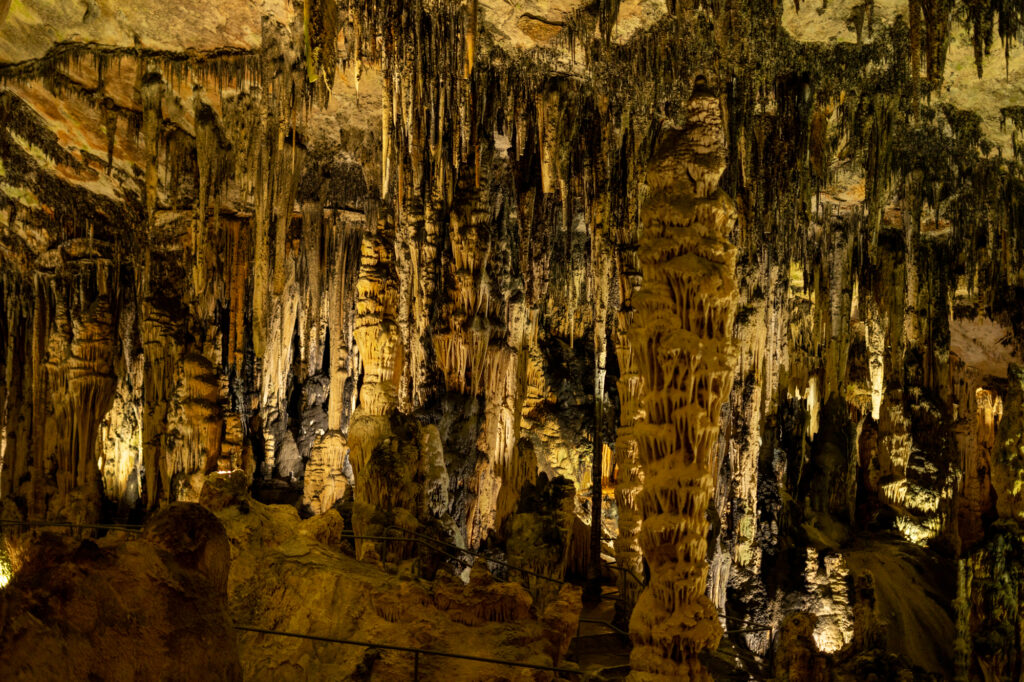
The Coves d’Arta are one of the island’s most spectacular natural wonders. Formed over millions of years, they offer an awe-inspiring glimpse into a subterranean world.
Once the hangout of pirates, the caves were publicly discovered in the late 19th century. Several chambers display incredible stalactite and stalagmite formations, with one in particular, the Queen of Columns, reaching around 25 meters in height!
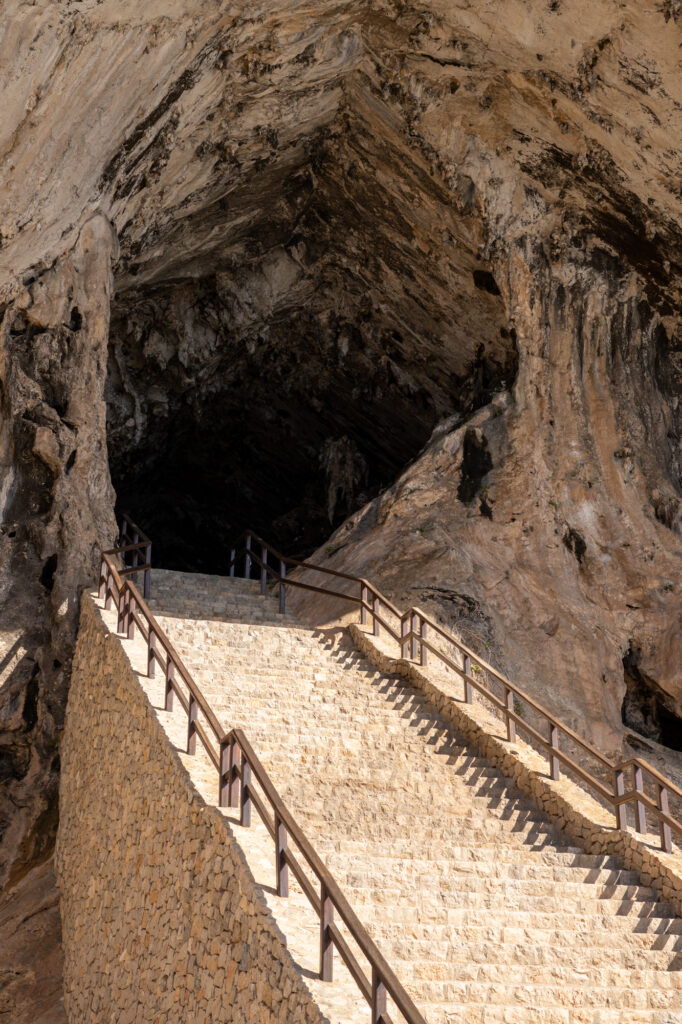
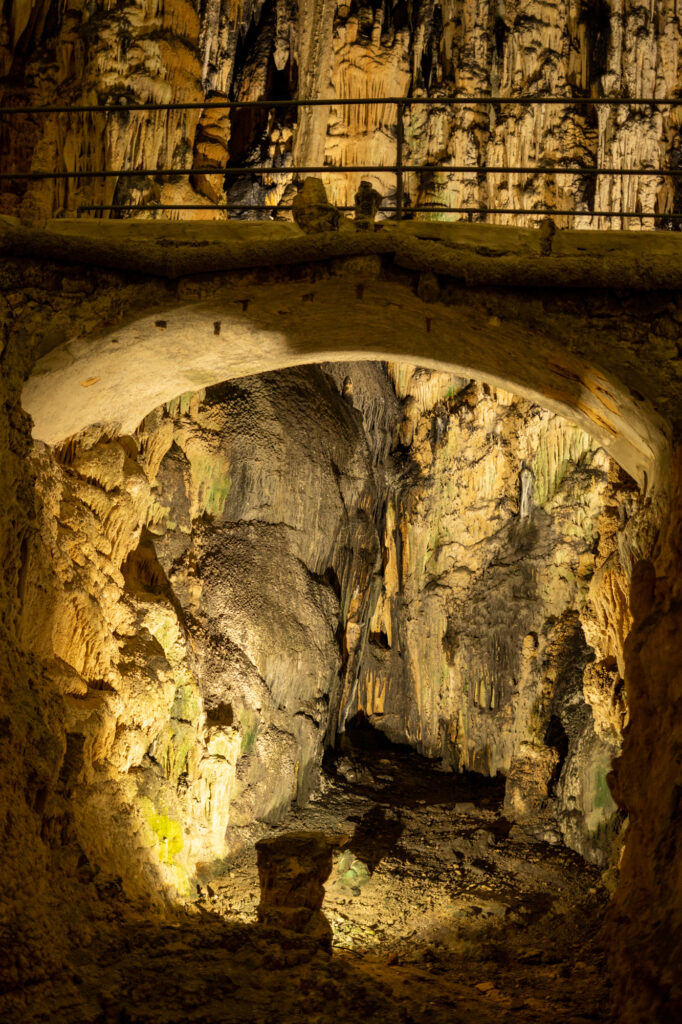
The tour takes around 35-40 minutes and is available in several languages. You can simply turn up and buy your ticket at the counter, or book online in advance (recommended in summer).
The surrounding area offers some of the most beautiful beaches and tourist attractions on the island (see also the Capdepera castle and lighthouse featured below), so make a day of it to visit this eastern cape.
Visit the Castell de Capdepera
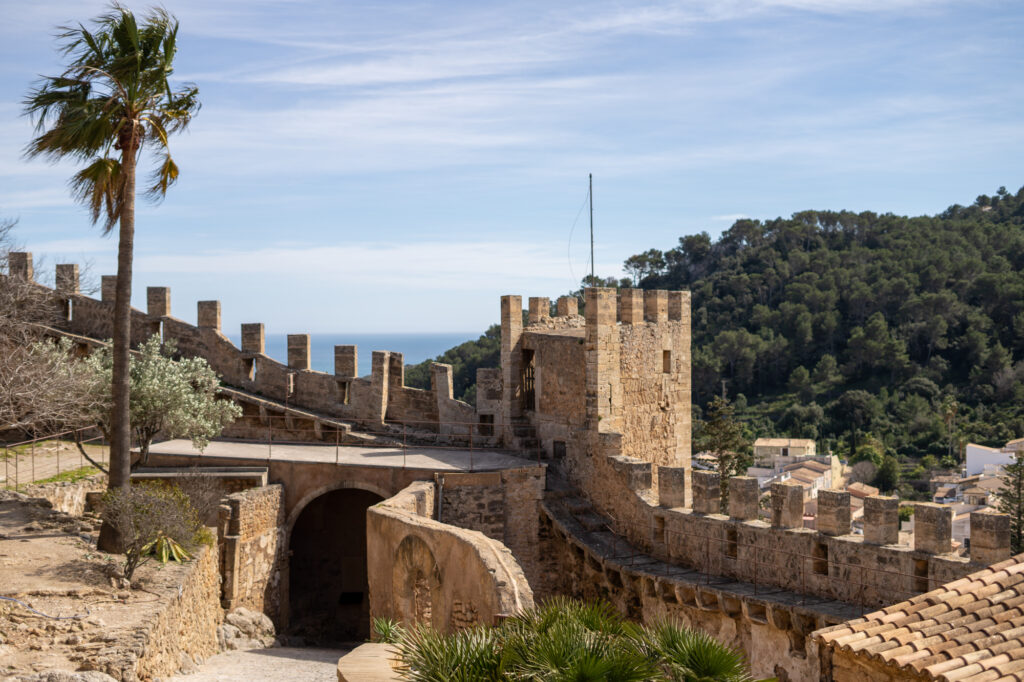
Capdepera is a picturesque town characterized by its basket-weaving traditions, charming streets, vibrant cultural calendar, and hilltop fortification which can be seen for miles around. The Capdepera Castle sits at the helm of the small town, dominating the Mediterranean landscape that surrounds it.
Dating back to the 14th century, the castle was a key part of the island’s defence system in the Medieval period, as it offers exceptional views over land and sea.
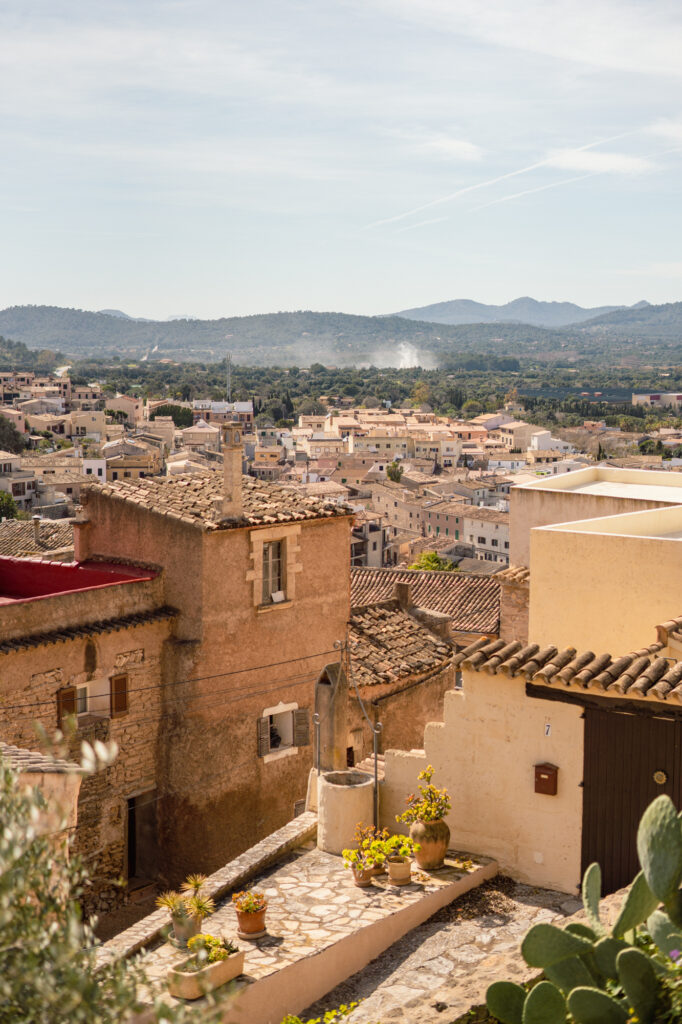
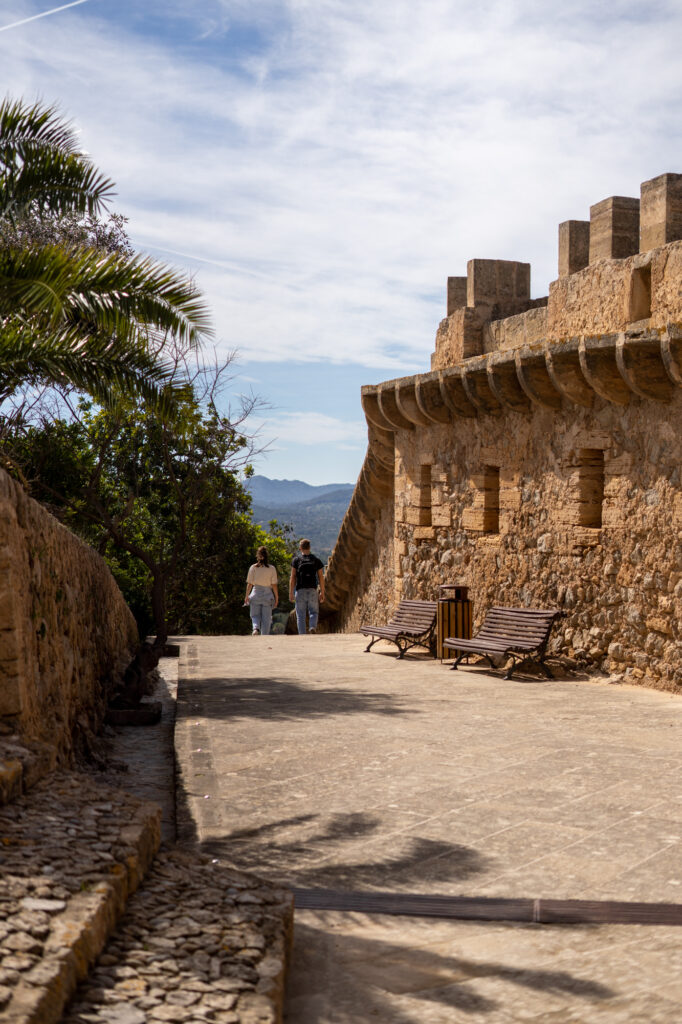
Visit today and you can catch a glimpse of Mallorca’s troubled past. Walk along the castle walls, pop inside the onsite museum, and take in the stunning views as you explore the site.
Entrance costs only €3, and it’s open year-round except in January.
Follow the Coastal Path to the Capdepera Lighthouse
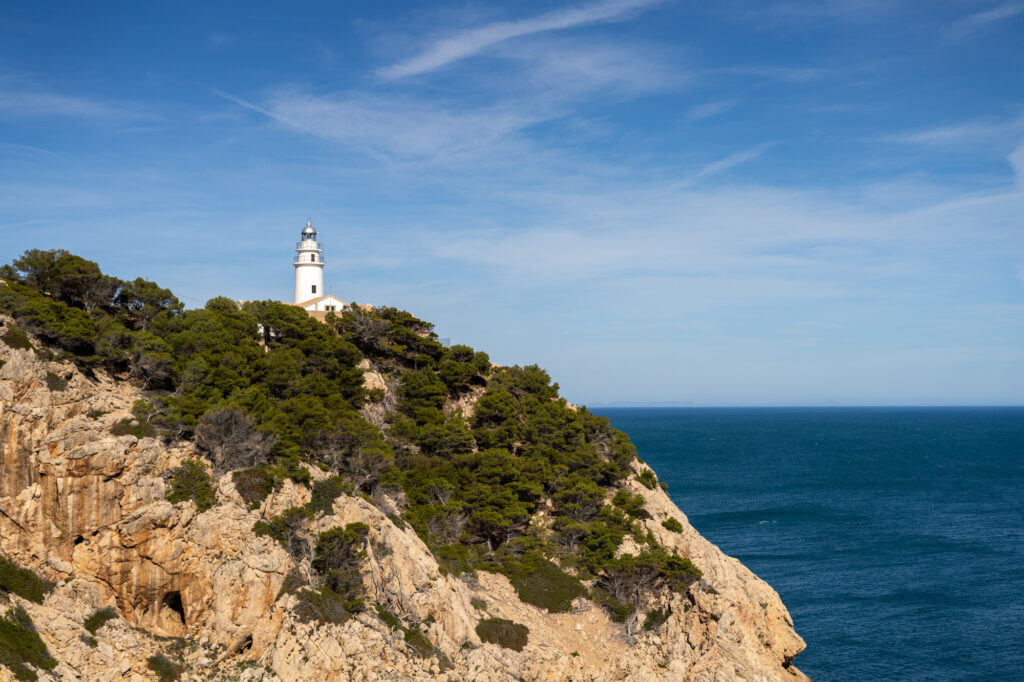
We’ve visited the northernmost lighthouse at Formentor, now it’s time to pay a visit to Mallorca’s easternmost lighthouse, the Capdepera lighthouse. Built in 1861, its position was a strategic choice to guide sailors through the Menorca Channel.
In fact, on a clear day, you can see the southern shores of Mallorca’s Balearic neighbour in the distance.
Related Reading: Best Things to do in Menorca, Spain
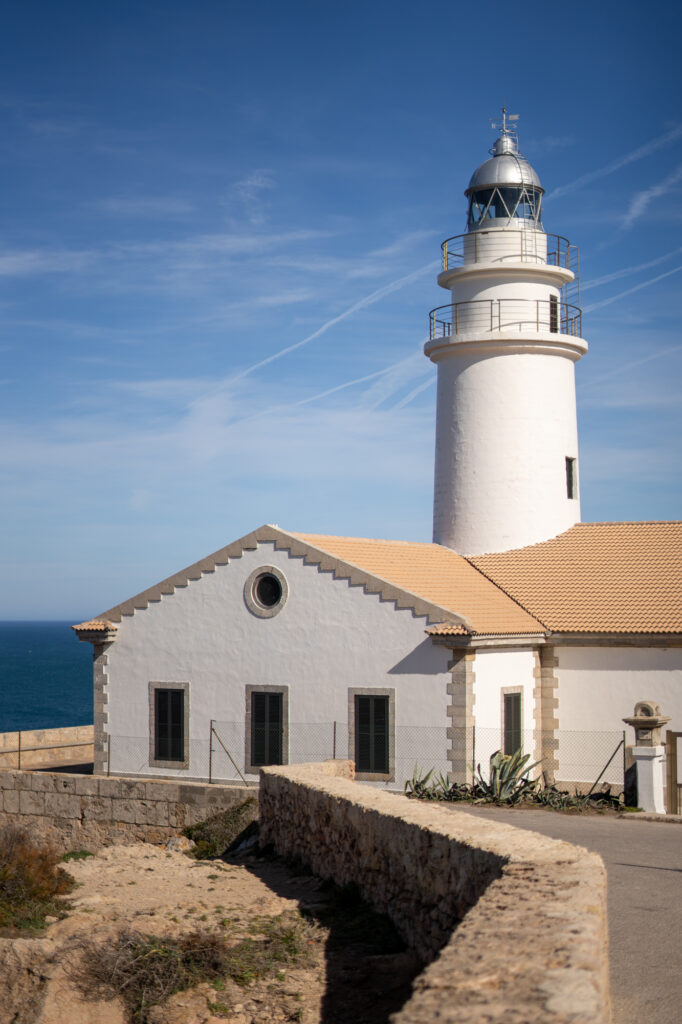
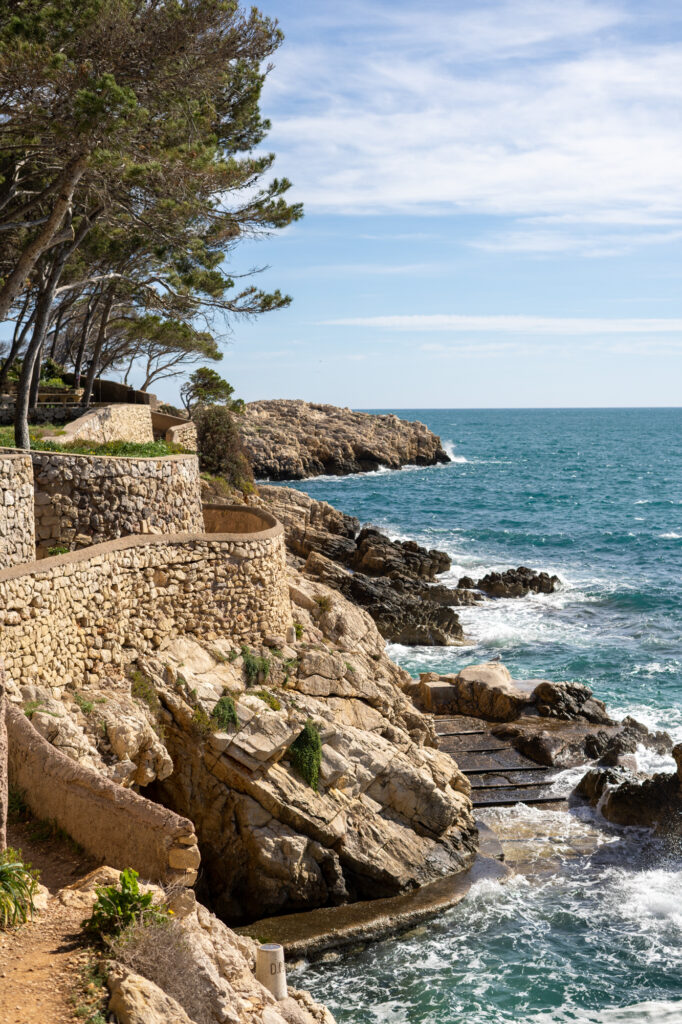
The most scenic way to reach the lighthouse is via the coastal path that stretches from Cala Gat. The first part, as you walk in front of stately waterfront homes, is well maintained. But as you proceed around the headland there are a couple of drop-offs, so sturdy footwear is recommended (not the Birkenstocks I was wearing!).
You can also drive up to the lighthouse, but parking is almost non-existent and you’ll miss taking in the dramatic coastal scenery along the way.
One of the island’s jewels and top things to see in Mallorca is the Mondragó Natural Park. It covers 1900 acres and is known for its pine-fringed beaches and native flora and fauna.
The park is blessed with diverse landscapes ranging from mountains, sea, forests, dunes, and cliffs and it’s a great place for walking and cycling, with trails taking in smuggler’s hiding spots, ancient water wheels and even military bunkers.
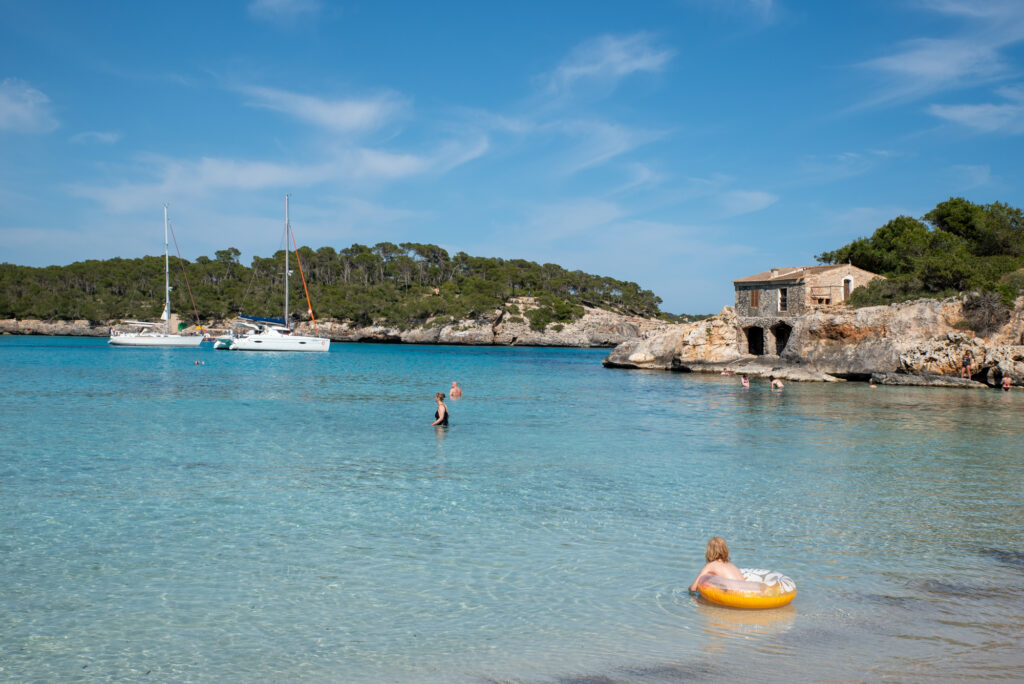
The area is also a birdwatcher’s paradise. Bring a set of binoculars or a camera with a zoom lens to observe peregrine falcons, black vultures, and kestrels.
Afterwards, head for Cala Mondragó for sunbathing or a swim. This beach is closest to the information centre with a bar and restaurant, but perhaps the most beautiful is S’Amarador – consisting of virgin white sands and crystalline waters.
The natural park is easy to reach from most of the island and can be combined with a day trip to Cala Figuera or Santanyi.
Step Back in Time at Necropolis de Son Real
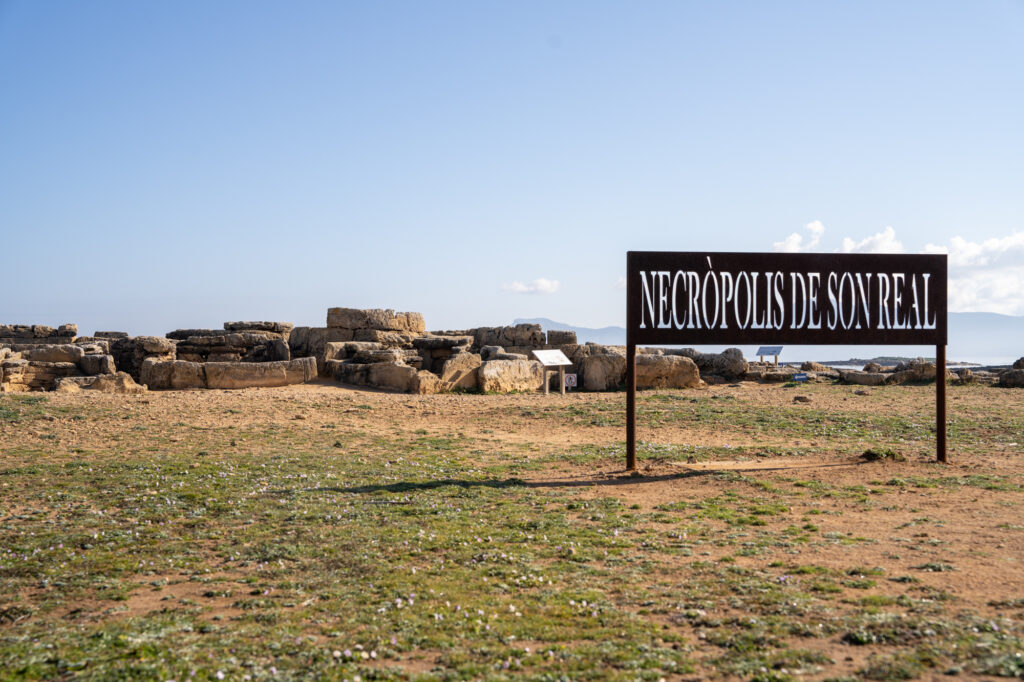
I bumped into this attraction by accident on a recent visit to Mallorca in the winter. Strolling along from the beach at Can Picafort, it’s almost hidden in plain sight near the water’s edge.
This archaeological open-air museum dates back to the Iron Age and represents one of the most important prehistoric burial sites in the Balearics. But its perilous location means some of it has been degraded or lost over the years to the sea and elements.
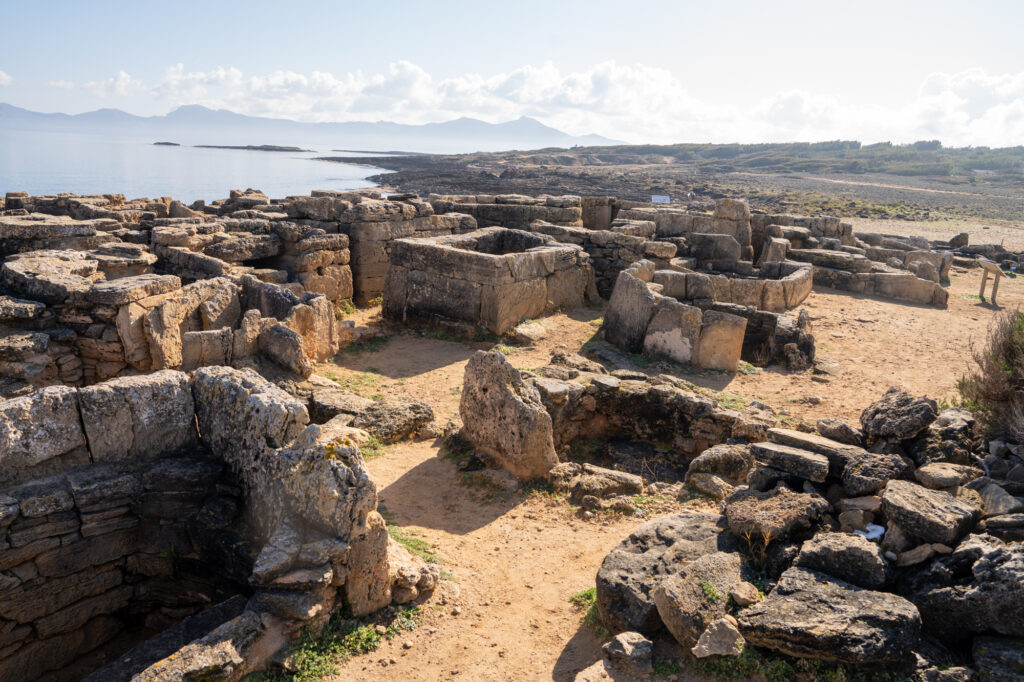
Still, what remains offers an educational journey into the island’s past. Follow the marked trail between the burial chambers and read about the history of the site on the provided informational plaques.
Chances are, you’ll have the location to yourself if you visit in the quiet season, and the walk here along the coast is sublime.
Discover the Roman Ruins of Pollentia
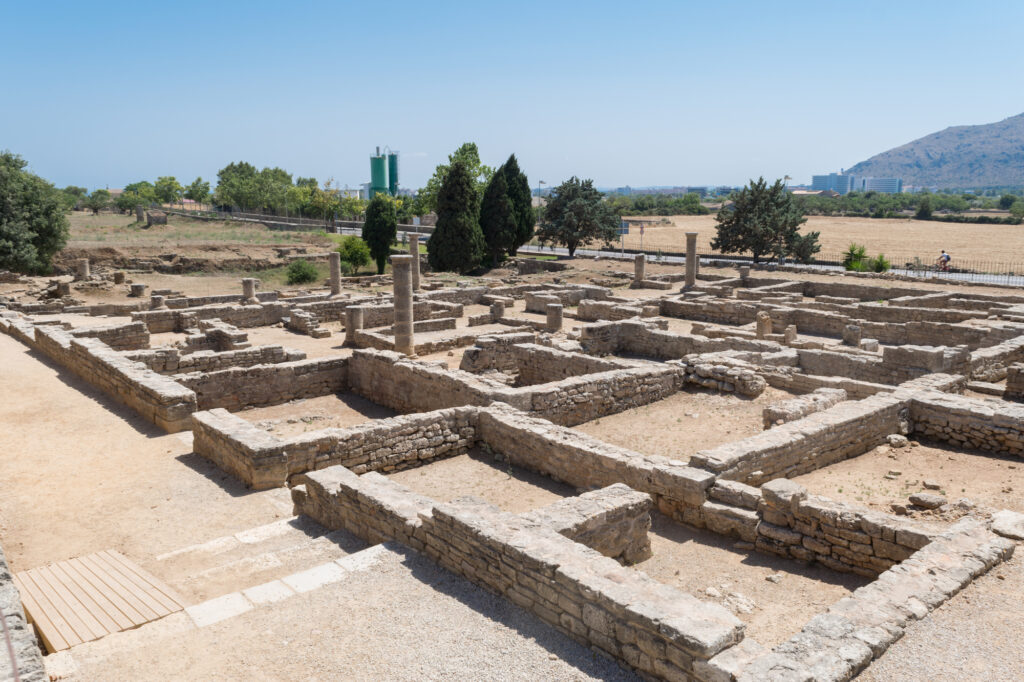
Dating back to 123 BC, the ancient Roman era town and theatre is situated in a strategic location between Alcudia and Pollensa. At the height of its popularity, Pollentia was industrious and prosperous, and covering up to 20 hectares, it was one of the most important cities in the archipelago.
Wander through the remains of the ancient amphitheatre, see the residential area where people once lived and visit the forum where decisions were made for the city.
There’s an interesting museum displaying collections of excavated artefacts too, so if you’re interested in learning more about the history and archaeology of the island, this is the best area in Mallorca to add to your holiday itinerary.
See Surrealist Art at the Miró Foundation
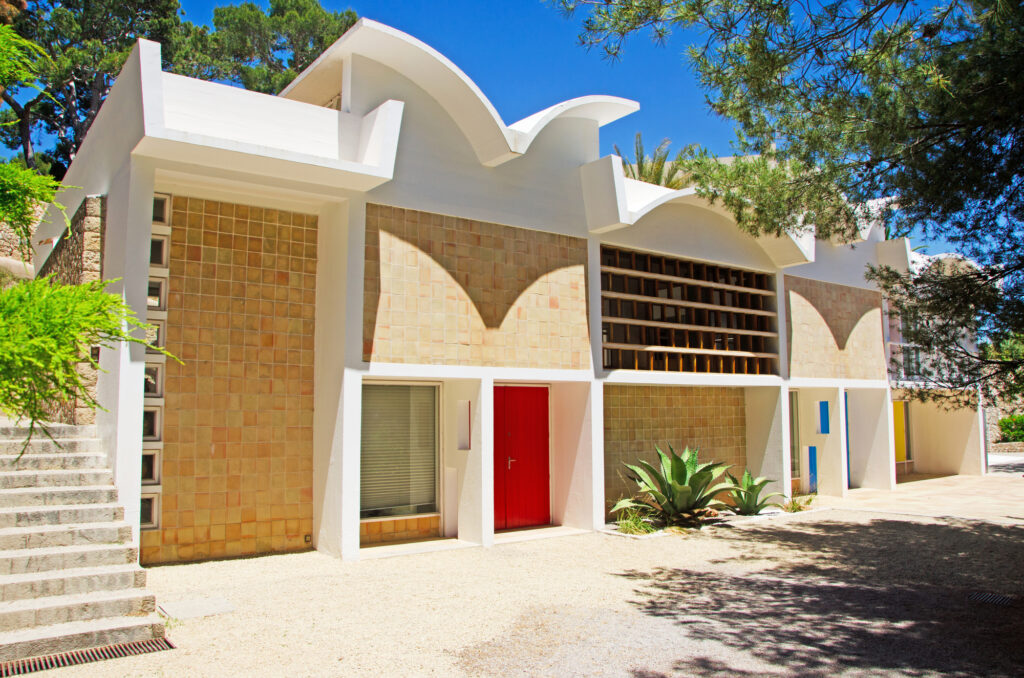
One of the most unusual things to do in Mallorca, but one of the most fun if you’re into art, is to visit the Joan Miró Foundation near Palma.
The Catalan artist spent 30 years in Mallorca, and this one-of-a-kind collection showcases some of his finest paintings, sculptures, prints and drawings from the Surrealist and Expressionist eras.
The studios and former workshops in Cala Major are filled with some of the artist’s finest works in his signature colours. Take a guided tour to learn about the creative processes behind Miró’s work and see your favourite pieces displayed in the studio.
Join Locals on a Tapas Tour in Palma
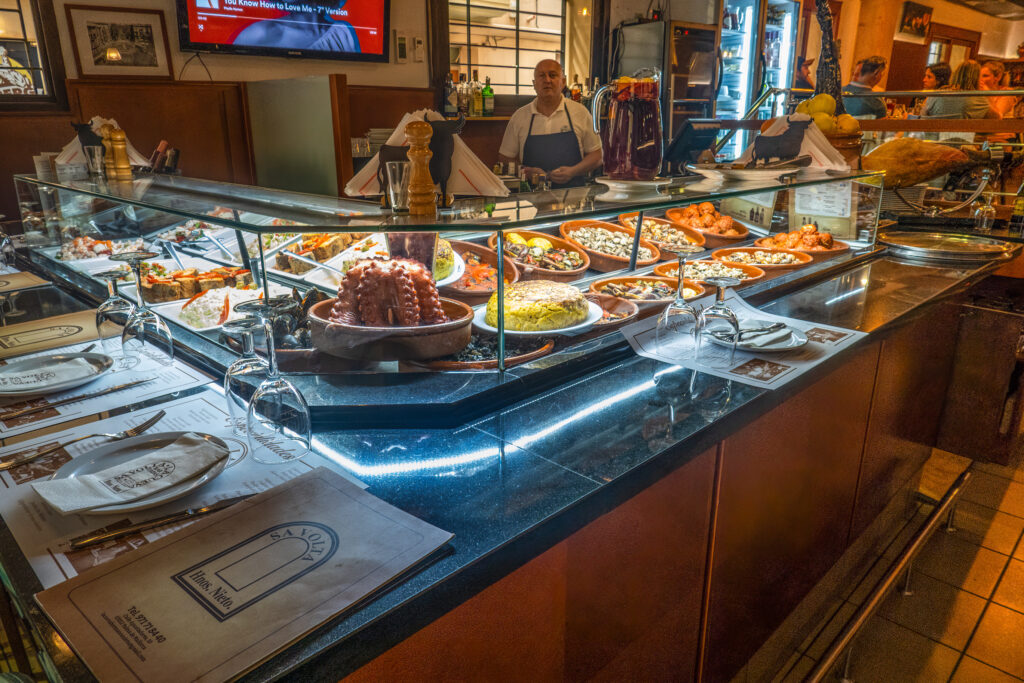
On Tuesday evenings in Palma, head for Sa Gerreira district near Plaça Mayor, where tourists can join with locals to participate in one of the most authentic experiences in Mallorca.
The aim is to follow La Ruta Martiana, the city’s tapas trail. On this night, all bars serve beer or wine and a small plate of tapas known as pintxos for between €2-3 euros.
The bars are atmospheric and lively, and each bodega is within a few minutes walk of the last. Tasty tapa treats are usually served on chunks of crusty bread, Basque-style, and the evening’s offerings are chalked on a board outside.
It’s a fun way to spend an evening in the city – sampling local cuisine and making new friends. If you’re not visiting on a Tuesday, fear not, as you can still book a tapas tour of the old town.
Take a Boat Trip to Sa Dragonera Island
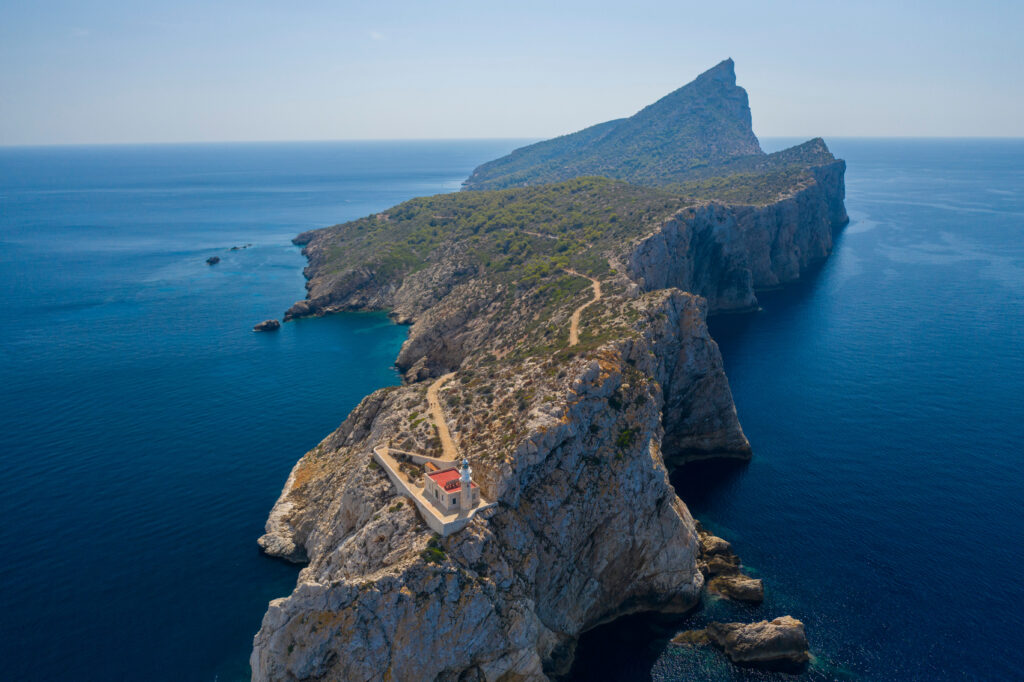
Sa Dragonera sits majestically off the southwest coast of Mallorca. This six-kilometre-long verdant island has a Jurassic Park vibe and was once a notorious hangout for Barbary pirates who used it as a base from which to invade Mallorca.
Today, the island has no inhabitants – it’s a protected nature reserve with hiking trails and several landmarks. Wander rugged trails to discover an ancient Roman necropolis, lighthouse, several observation points and watch towers.
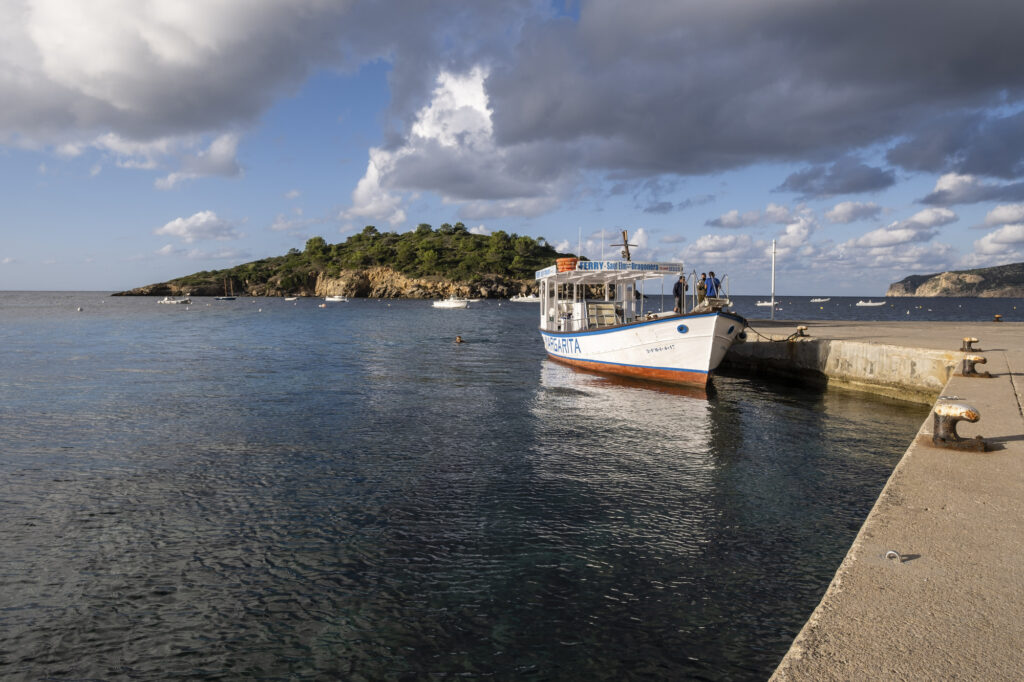
On your journey, you’ll encounter seabirds, tiny endemic wall lizards and over 360 different plant species, and for those eager to explore the waters around the island, it’s possible to a book scuba diving experience.
Hop aboard a ferry, private boat, or kayak (with a picnic), at Port Andratx or Sant Elm and spend the day exploring this spectacular natural habitat.
There are many more top things to do in Mallorca, but these are our favourite destinations and activities for a first or second-time trip to the beautiful Balearic Island. Hopefully, this article has inspired you about where to go and what to see on your next trip to Mallorca!


